-
Posts
1,475 -
Joined
-
Last visited
Content Type
Profiles
Forums
Gallery
Events
Posts posted by archjofo
-
-
Hi Roger,
you do not need to apologise for your interest in my construction report. I am therefore happy to answer your question.
I had the castings made by a jewellery foundry in Germany. I made the master patterns from brass myself. These were then cast from brass using the lost wax process.
If you have any further questions, please do not hesitate to contact me. -
Hello,
La Créole also had breast-backstays and had them on the mainmast and foremast.
I am currently making the double blocks (length 6 mm) for the tackles. These will be hooked into an eyebolt on the channel.Here is an attempt to show the leather lining of the hole in the cap.

Here I show an example from the L'Hermione.
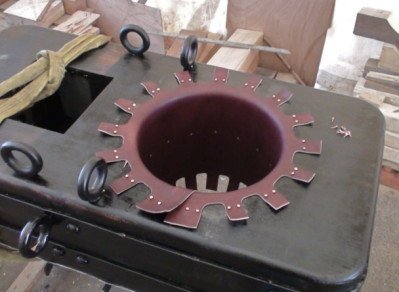
-
-
-
-
Hello,
Thomas, many, many thanks for your kind comment.
Thank you also to all the others for the many LIKES.Such a response always makes us happy and gives us motivation to continue.
Today I would like to report briefly on a small mishap.
I thought that I could attach the sister blocks for the topmast shrouds directly to the model.Of course, this does not work. Good thing I haven't tied the lanyards yet.
So I will have to remove the topmast shrouds again.
Before I do that, I made a prototype for a sister block to see how they will be attached.Source: Atlas du Génie Maritime
The one hole is drilled too far in the middle. I will do better than that.
-
-
After mounting the main mast backstays, I was surprised to see that they go very close to the top and partly touch it.
What happened there?
Is the plan wrong?
Are the attachment points for the lanyards on the channels incorrect or too far inside?
In my search for explanations I found what I was looking for. On the one hand, I read that it apparently often happened that the backstays came too close to the tops, and thus there was a danger of rubbing.
And, this is exactly the case with the L'Hermione as well. And, as you can see in the next picture, the backstays were dressed in the critical areas.
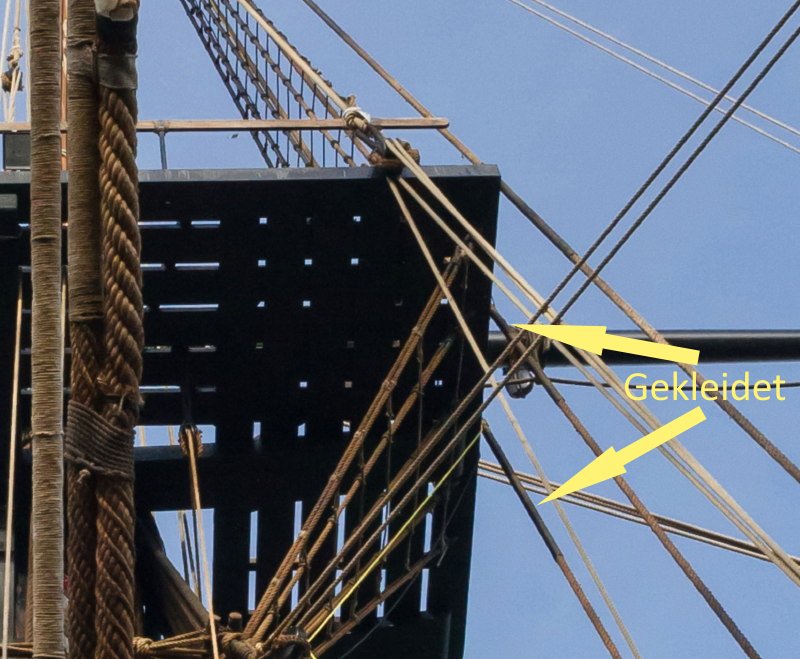
So this detail would also be cleared up. Accordingly, I will additionally serve the corresponding backstays in the said areas.
Finally, I would like to show you the double blocks for the shifting backstays that have been made in the meantime. The smaller double blocks are for the shifting backstays that lead to the mizzen topgallant.
-
Hello,
thank you for your positive comment. I also want to thank the others for the many LIKES.
Today I made the standing fore topgallants backstays.
For these standing backstays, two on each side of the ship, I make the lanyards from Japanese silk 3x 3, which gives a diameter of 0.40 mm. The backstays are made of rope with a diameter of 0.77 mm, also made of Japanese silk 7 x 3. The dead eyes have a diameter of 3.4 mm.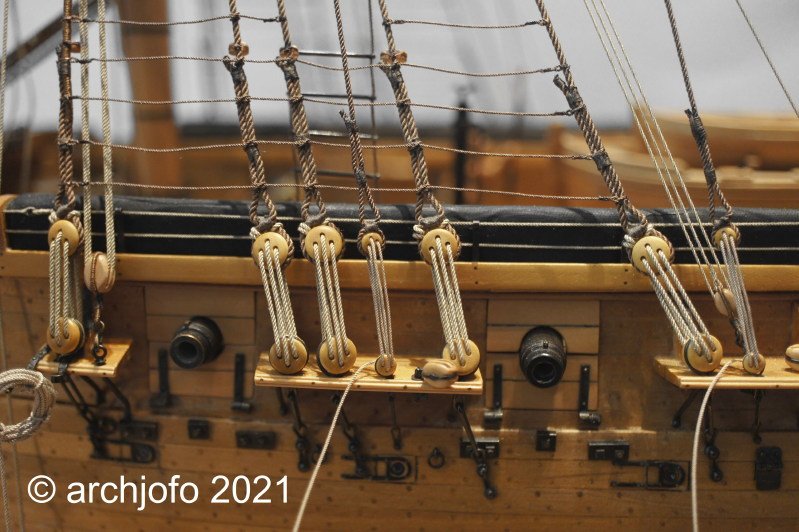
Here you can see the fore top head with the standing backstays:
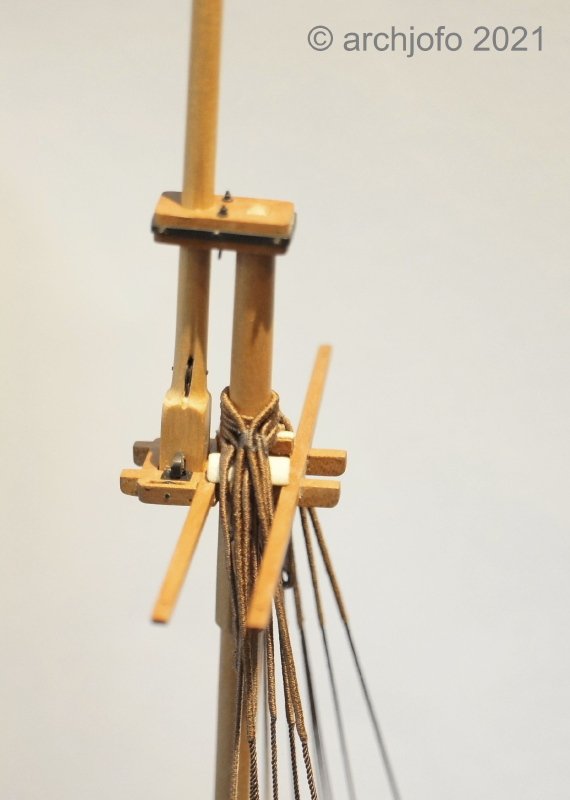
And you can also see the mizzen top backstays. Please note the metal plates for the fids.
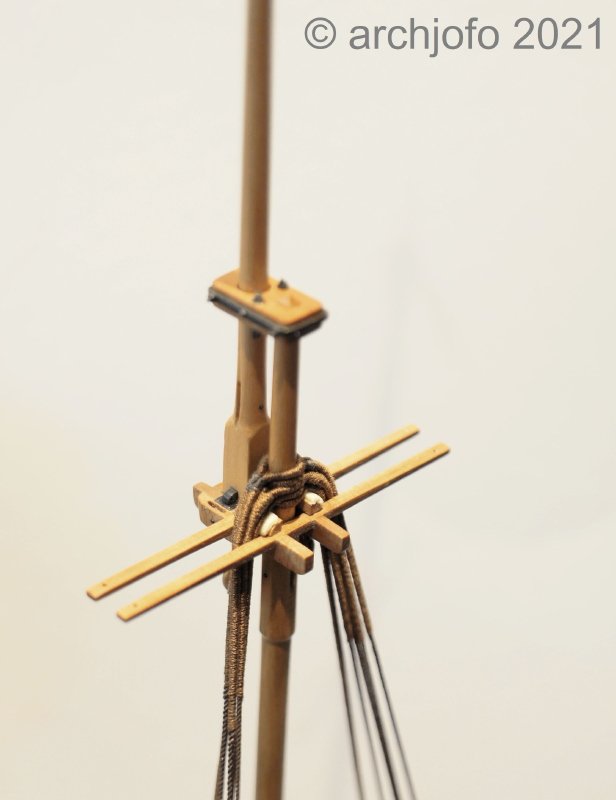
-
Hi Christian,
very precise and clean job.
I am very interested to see how it will continue.
-
Hello,
before I start, I would like to show the mizzen topmast head with the standing backstays as a supplement to my last report.
Contrary to my announcement, I will finish all the standing backstays first. It makes more sense to finish the rigging on one level first and then go upstairs.
So I continued with the main topmast backstays.I made these backstays from a rope with ø 0.81 mm (8 x 3 jap. silk YLI). The dead eyes have a diameter of 4 mm).
Here you can see the main topmast with the backstays.
The double blocks for the shifting backstays are already installed on the channel of the main mast.
-
thank you both for the kind comments. Thanks to the others for all the LIKES, of course.
It is always a pleasure to receive such feedback. It motivates me and gives me strength for monotonous work.
I have now finished the mizzen topmast backstays for the starboard side. For these standing backstays, two on each side of the ship, I made the lanyards from Japanese silk 4 x 1, which gives a diameter of 0.30 mm.
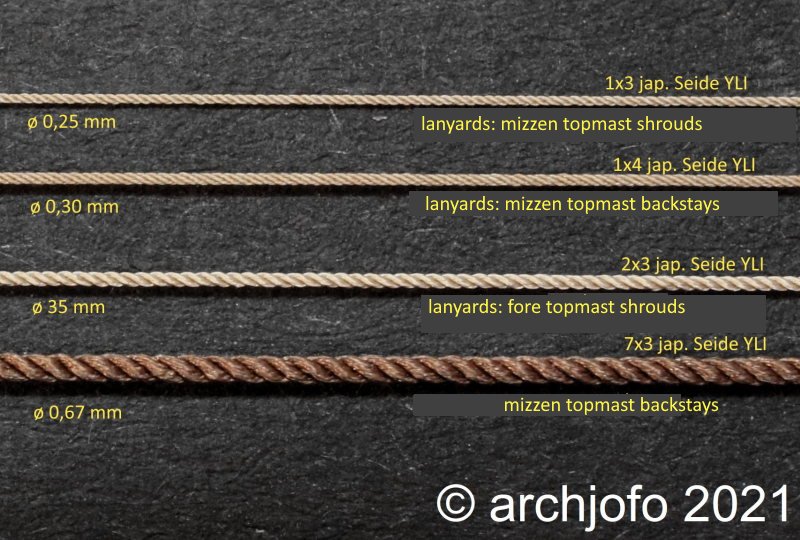
The next step is to attach the shifting backstays for the mizzen topgallant. -
-
In the meantime I have finished the mizzen topmast shrouds.
I have made the preparations for the mizzen topmast backstays. The implementation will take place soon.
Here I show how to determine the diameter of a rope relatively accurately (13,6,41 mm / 20 = 0,67 mm).
The picture shows a dead eye with a diameter of 2.8 mm for the tackle to be attached to the mizzen topmast backstays on the channels.
You can also see a rope with a diameter of 0.67 mm for the mizzen topmast backstays. -
Hello,
I would like to thank you in advance for your attention, and of course all the others for the many LIKES.
I almost forgot the tye blocks for the mizzen topmast. These tye blocks are 5 mm long, so they are smaller than, for example, the main masthead. The double strops are also thinner, but also served.The dead eyes and the block are only shown for size comparison.
- Jeronimo, Keith Black, Speedy and 17 others
-
 20
20
-
Thank you very much for your nice comments and to all the others for the many LIKES.
In the meantime I am already working on the mizzen topmast shrouds. There the dead eyes have a diameter of only 2.3 m.
-
Thank you very much for your positive comment. Also many thanks to all for the many LIKES.
In the meantime I have also finished the fore topmast shrouds (ø 0.67 mm). The diameter of the dead eyes is ø 3.1 mm.
-
-
Thank you very much for your participation in my project and the motivating announcements. Thank you also to all the others for the LIKES.
And here are the latest pictures of the rigging of the topmast shrouds.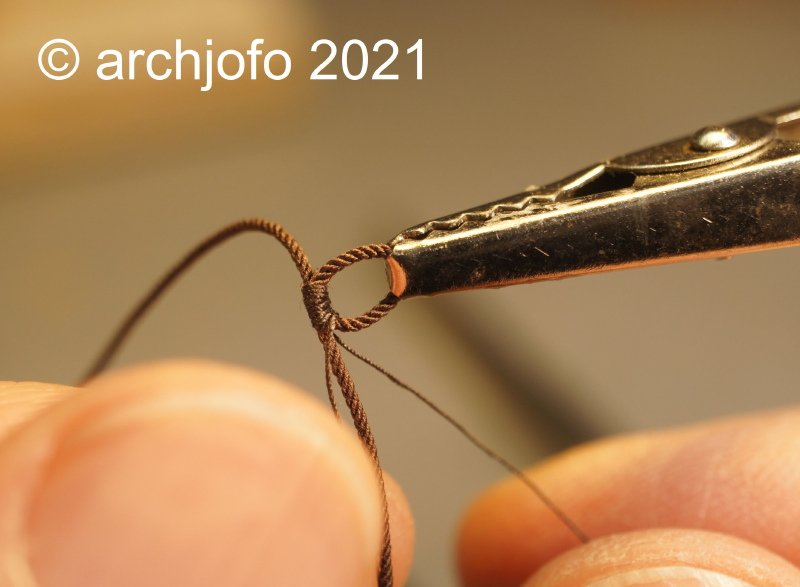
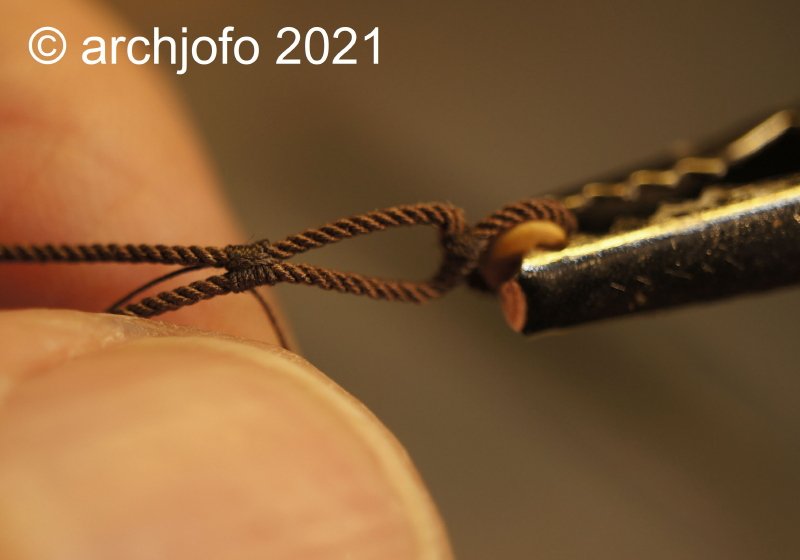
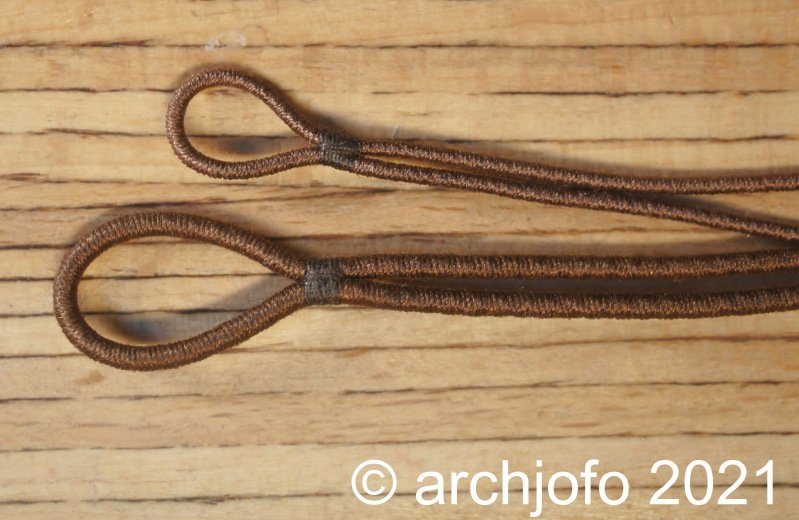
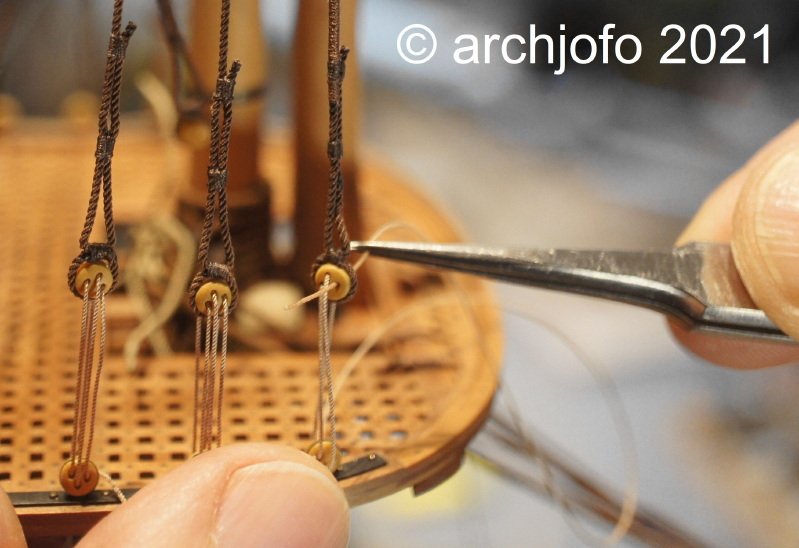
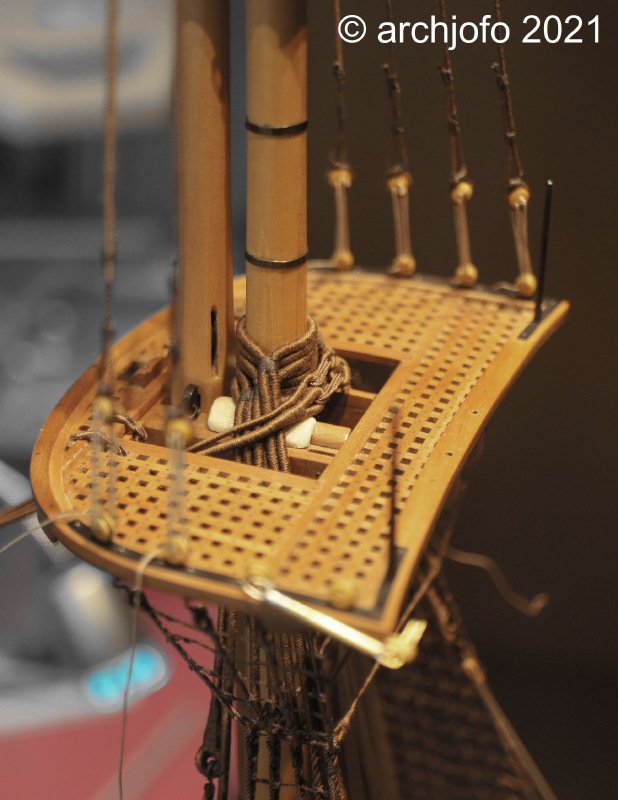
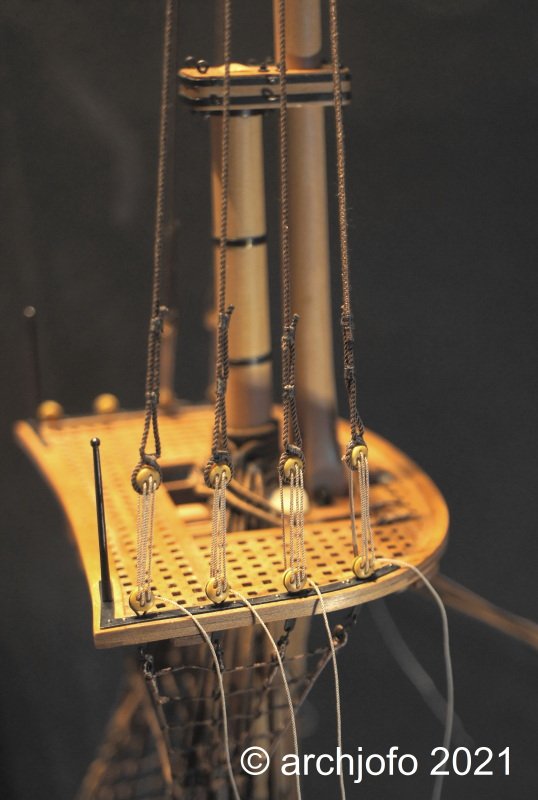
-
-
-
Hello,
I feel the same as Wefalck and Michael, by chance I came across this fantastic construction report.
I have followed Ed Tosti's report on the construction of the Young America with great interest for a long time.
Now I see your report on this beautiful clipper and the precision of your workmanship. I am thrilled and look forward to the continuation.I am grateful to you for sharing your project with us.
- Keith Black, michael mott and mtaylor
-
 3
3
-
-




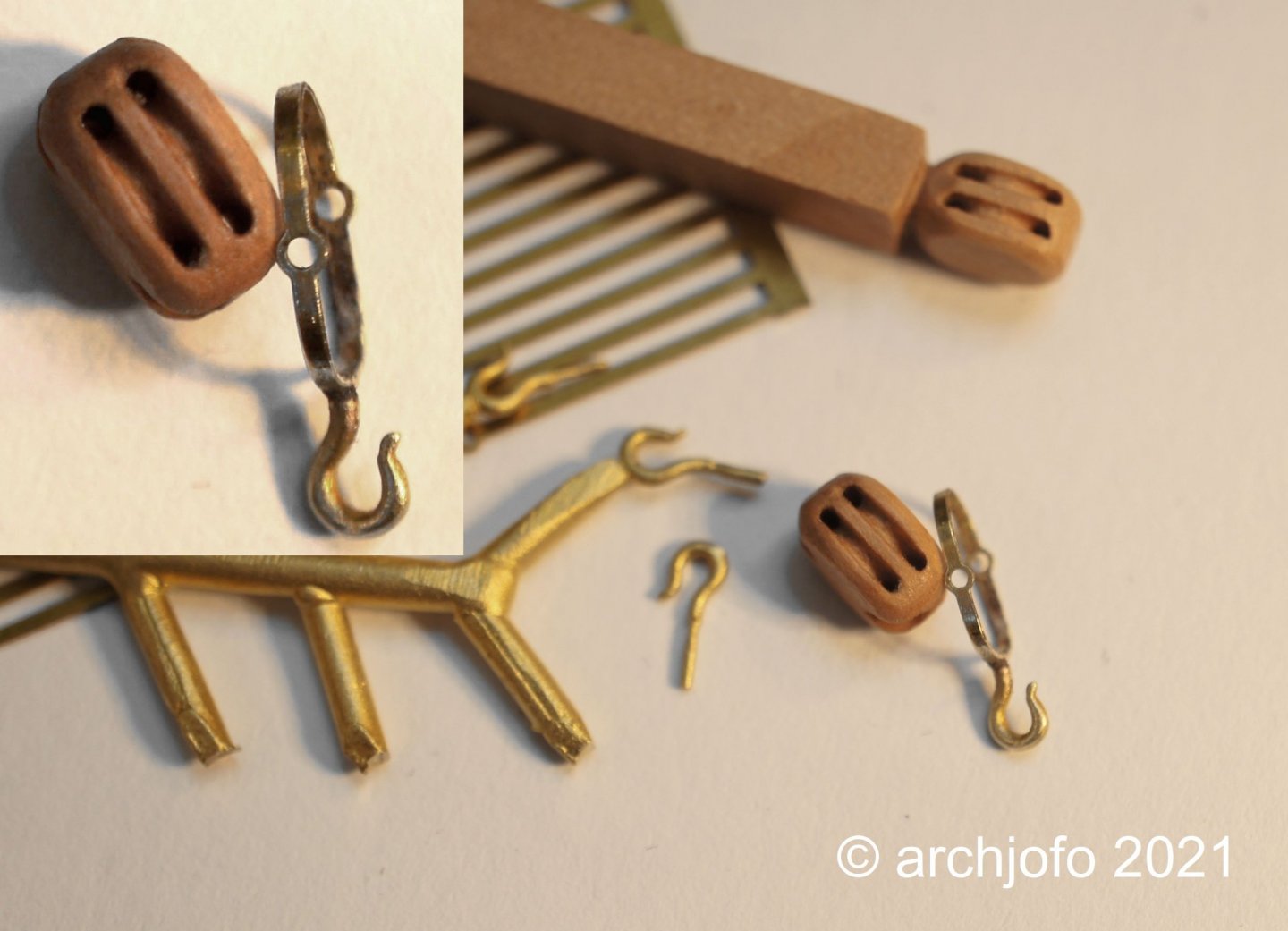

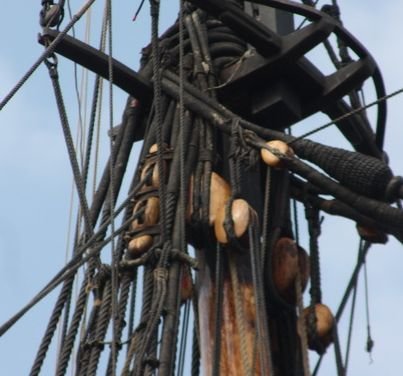
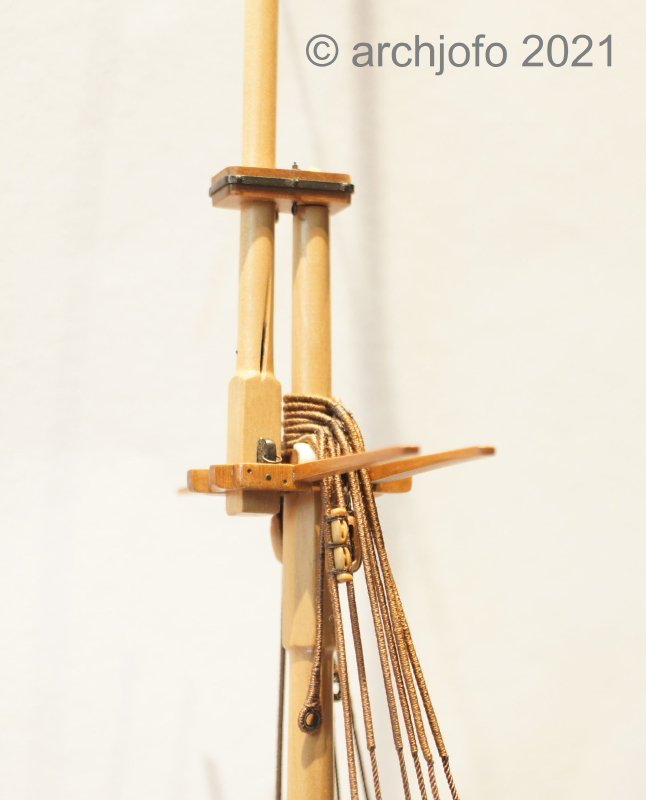

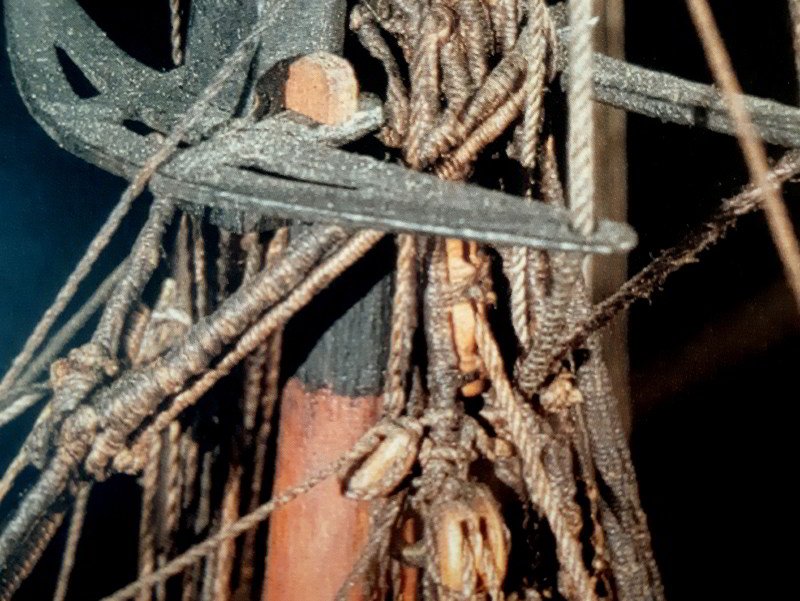
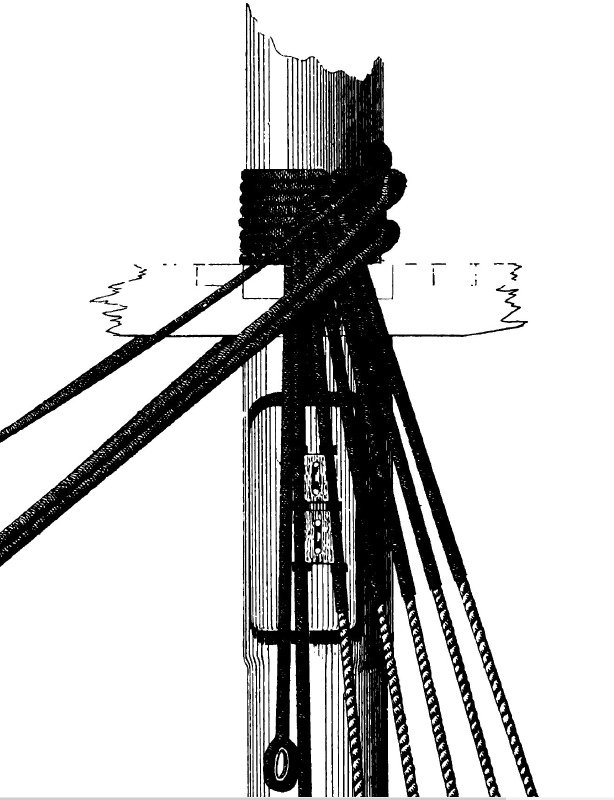
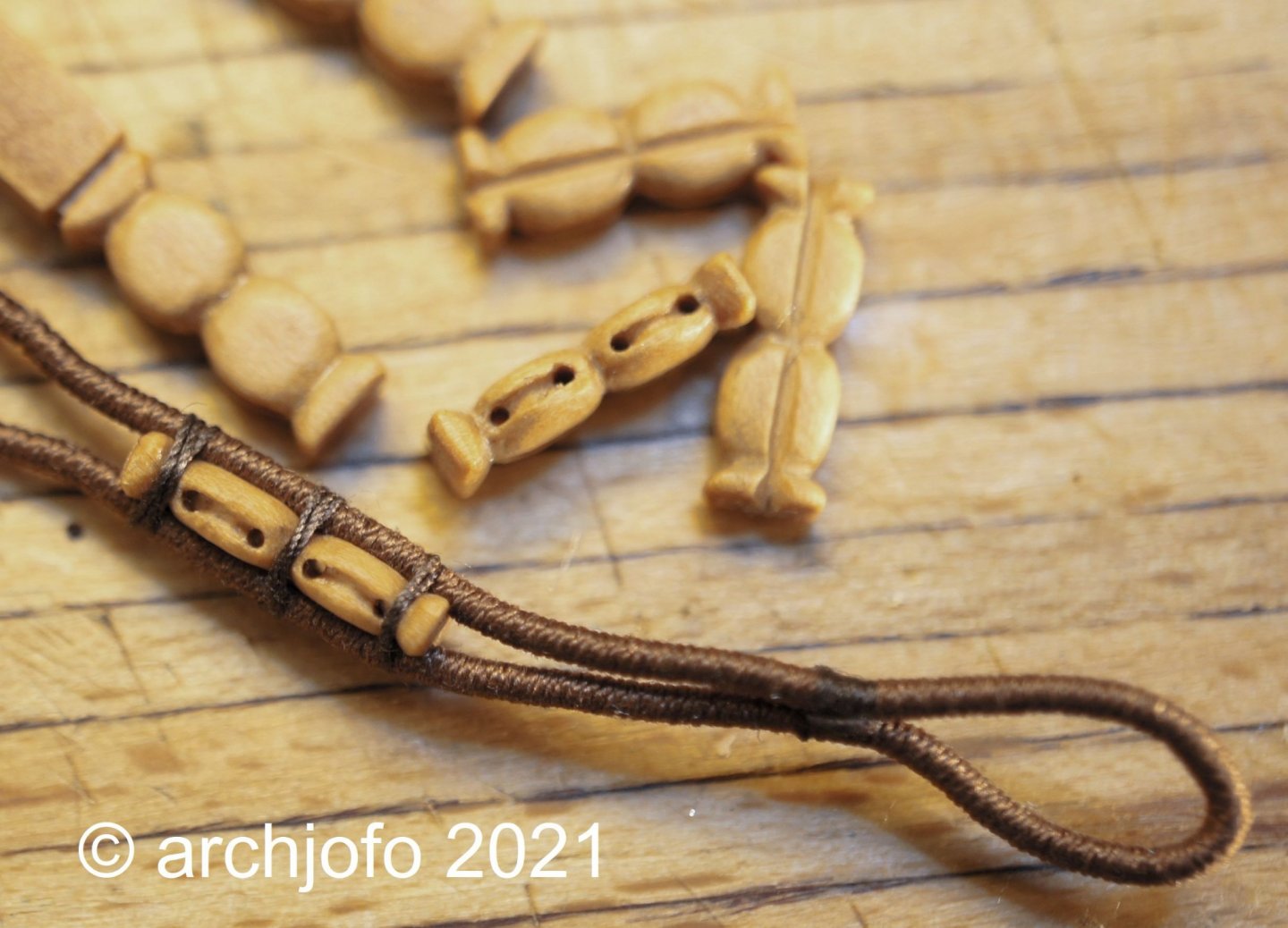
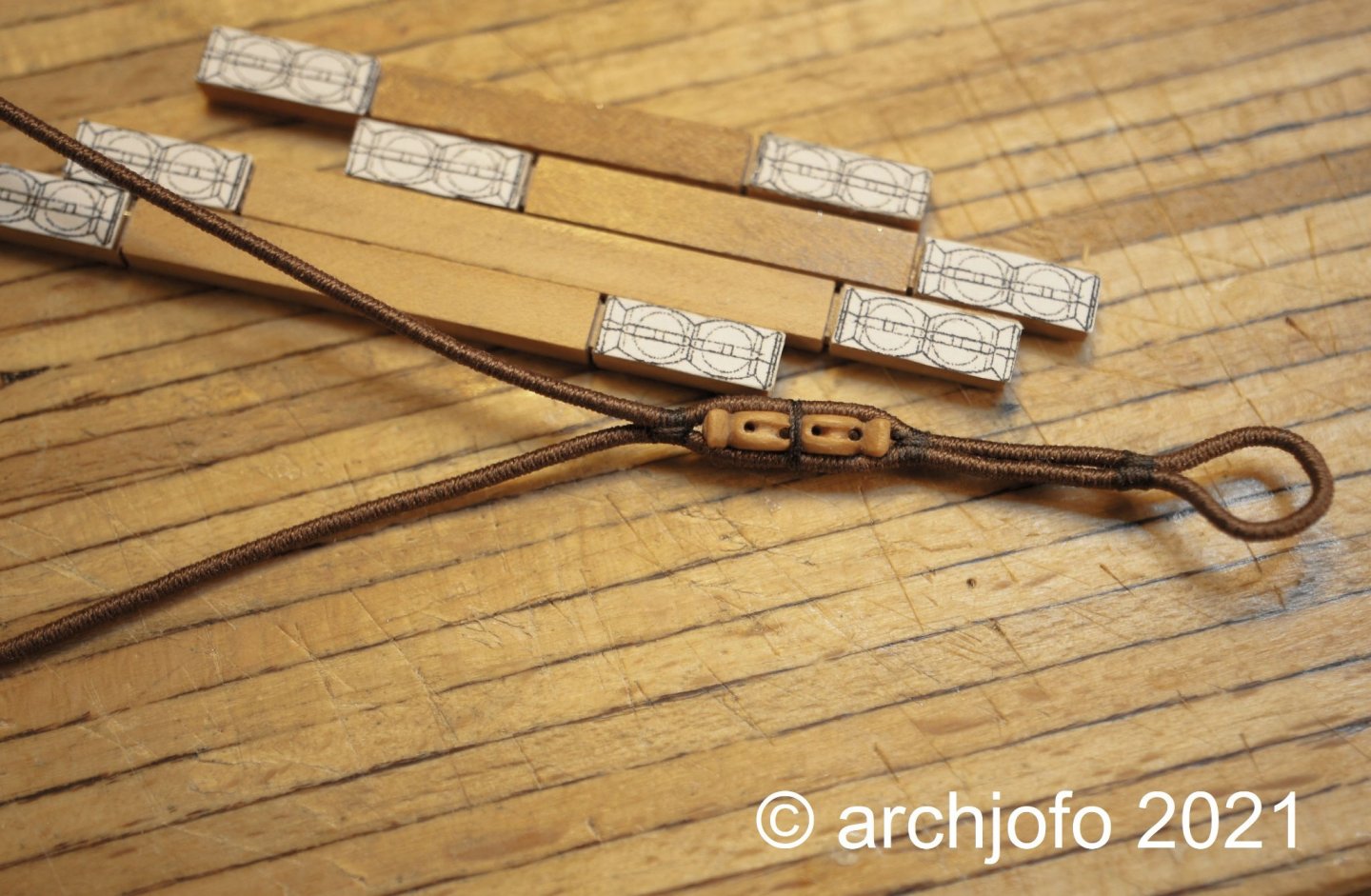
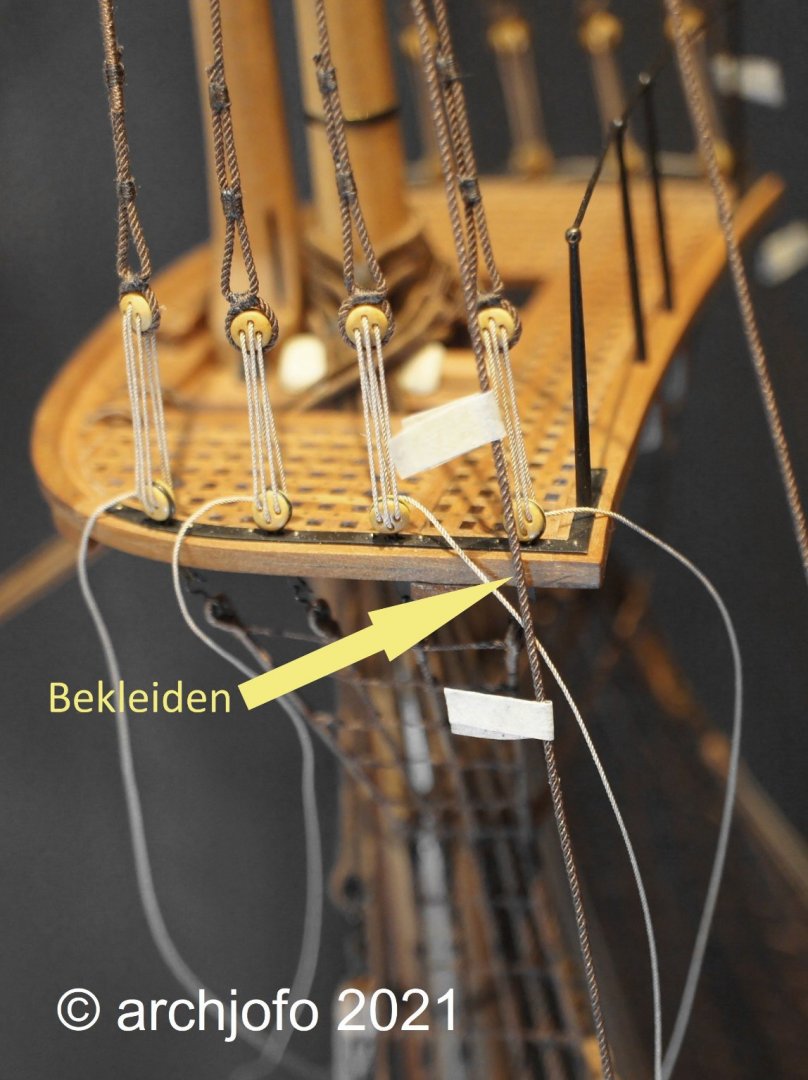
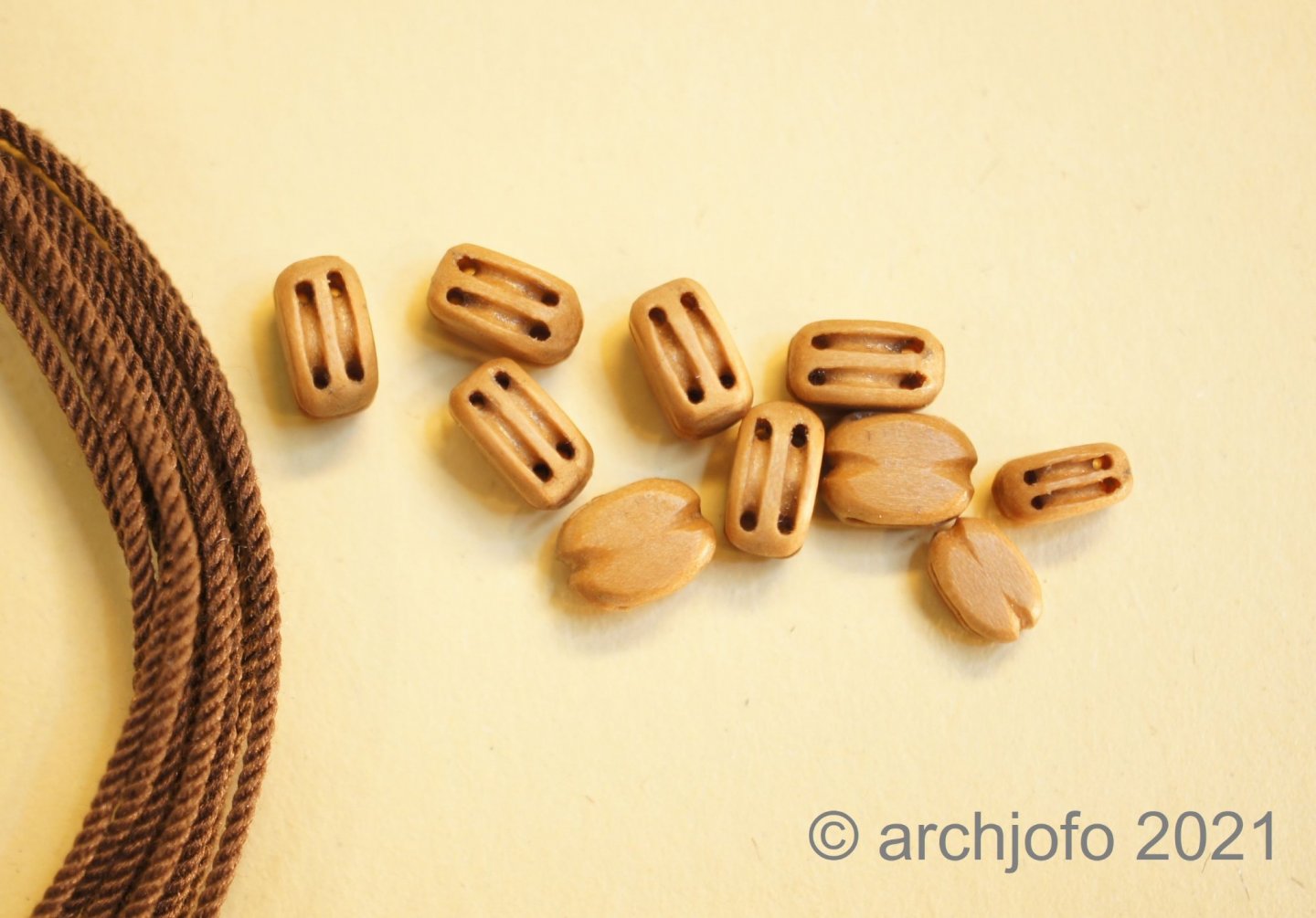
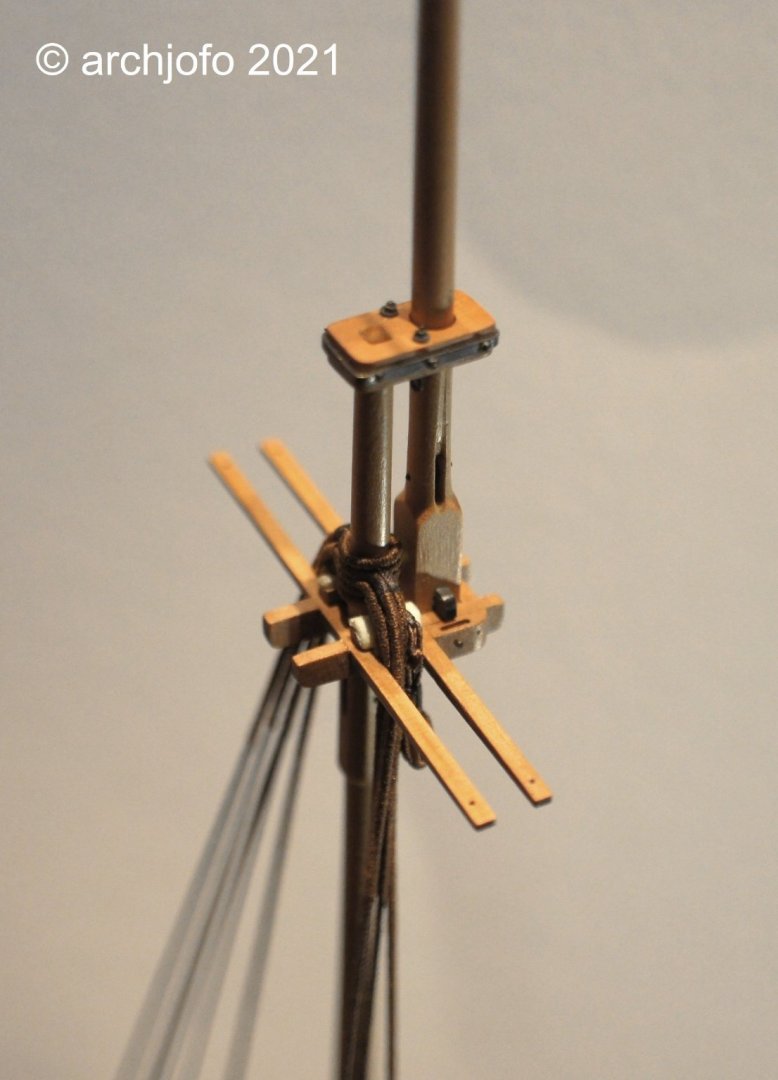
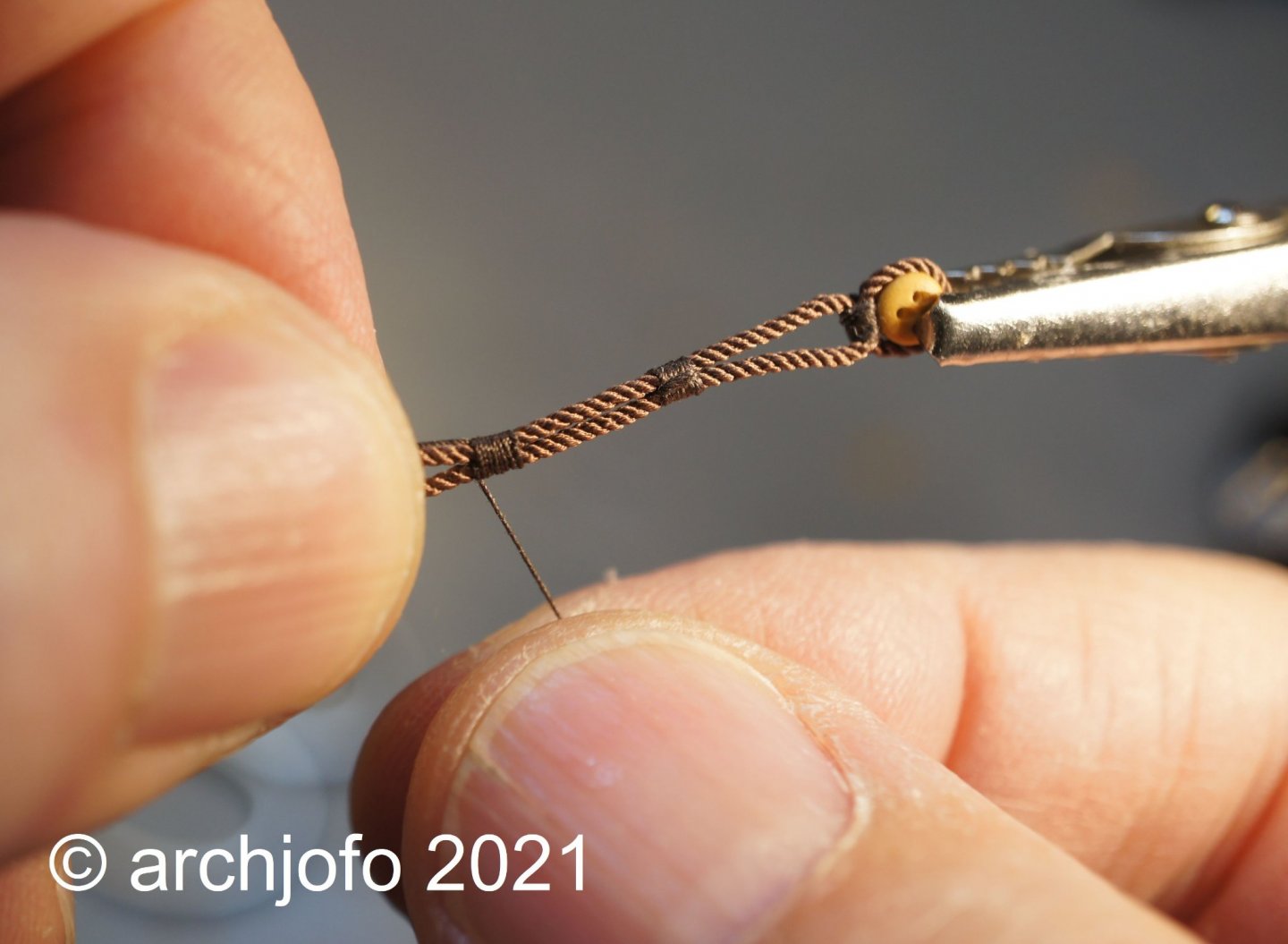
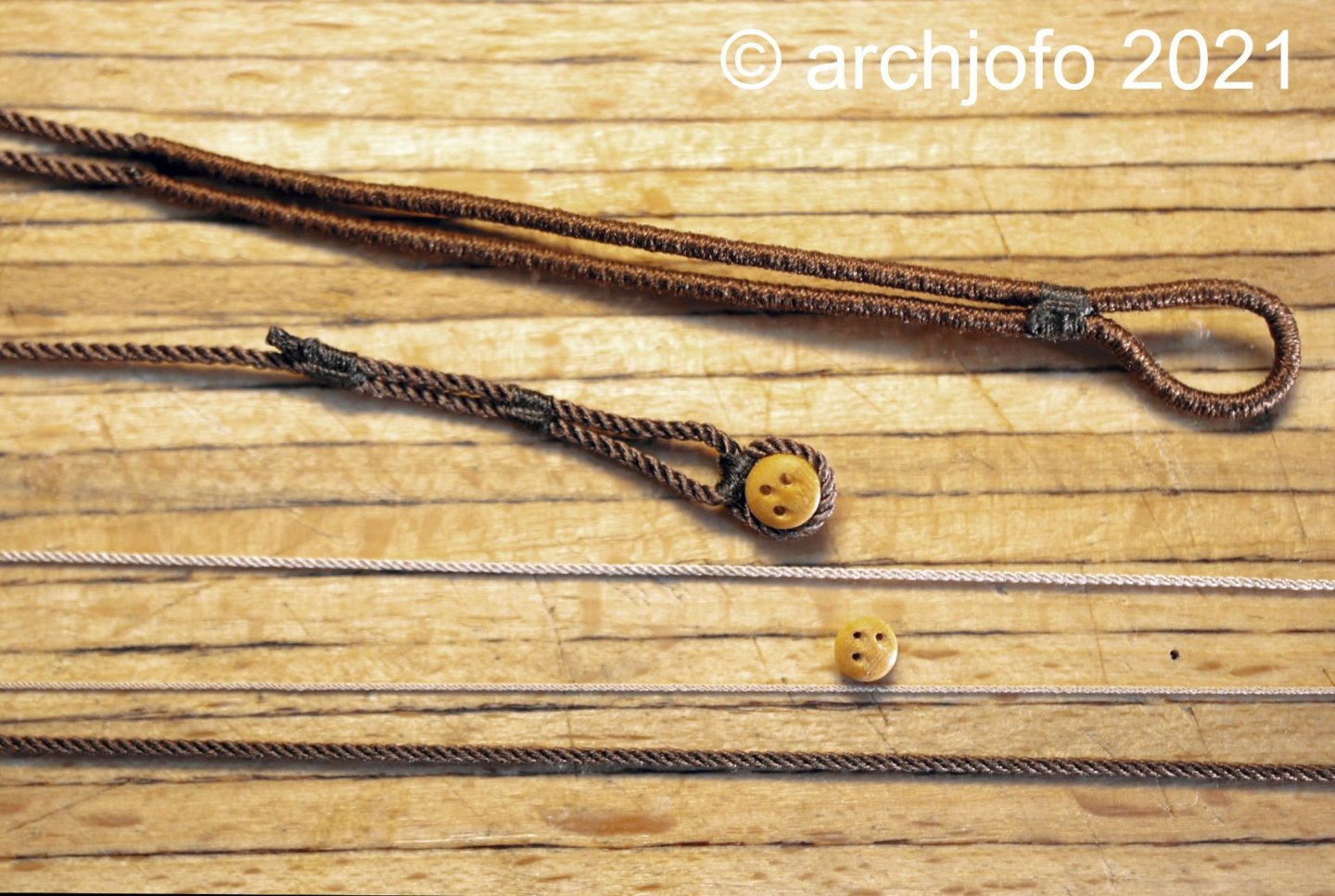

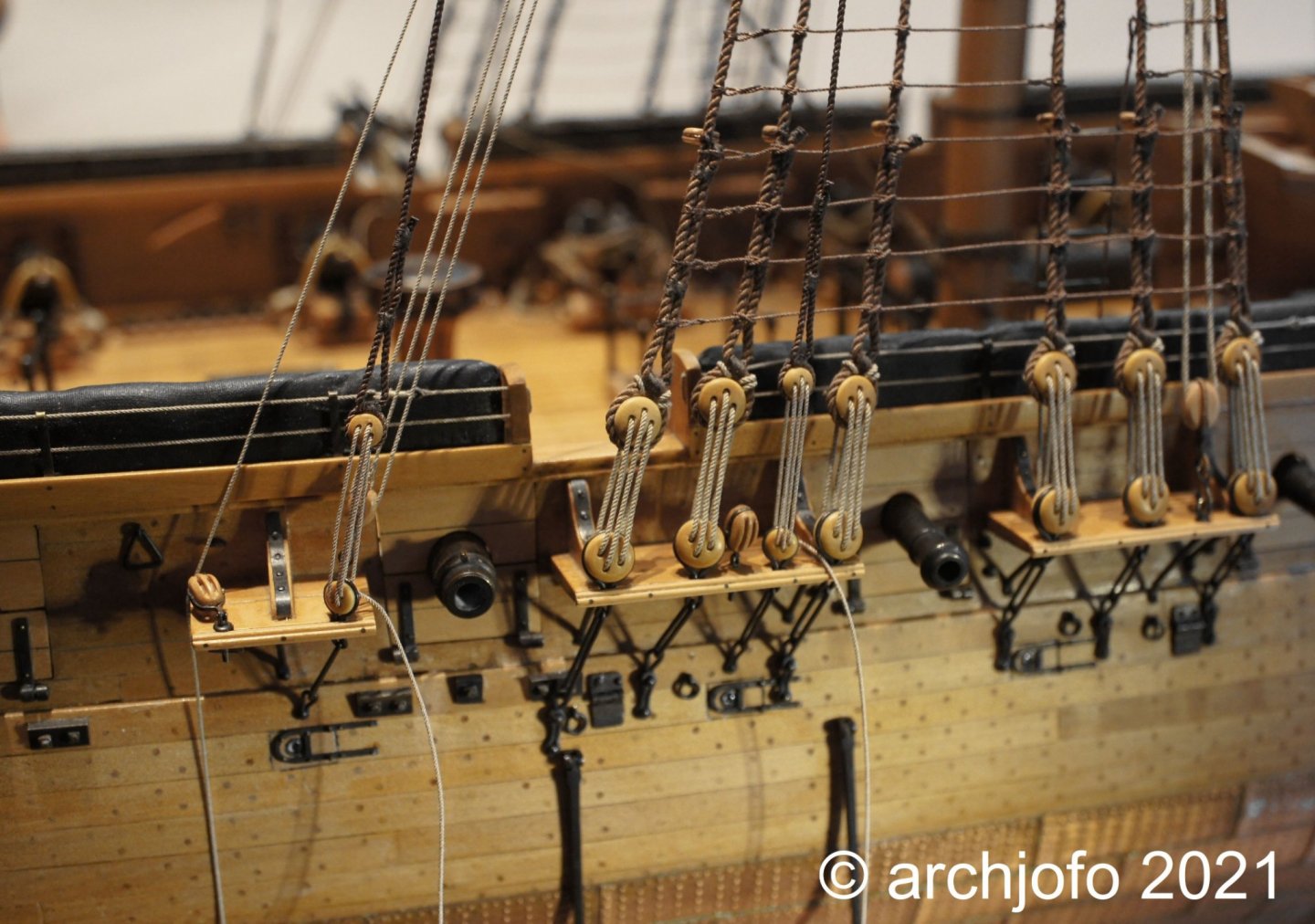
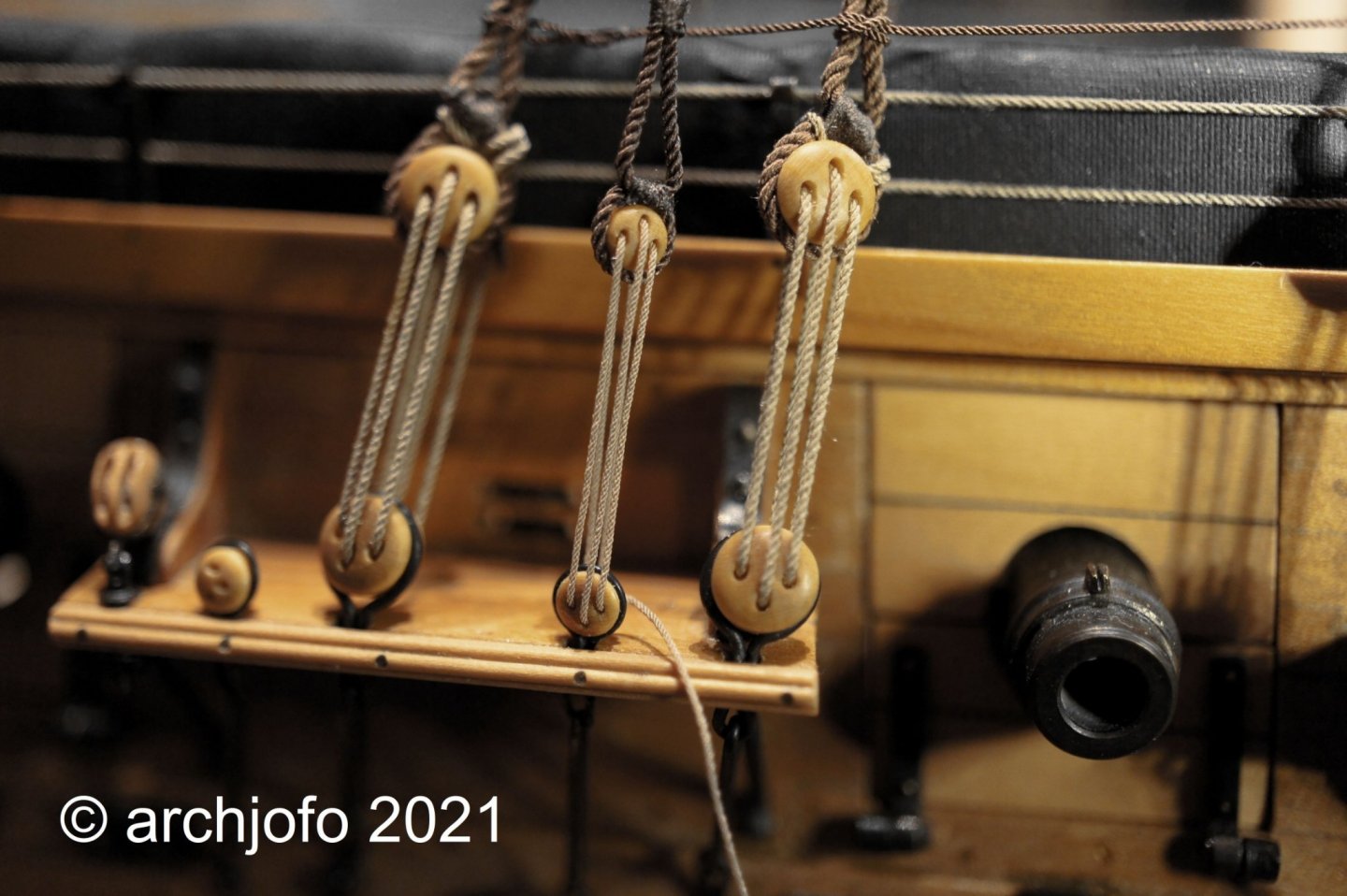
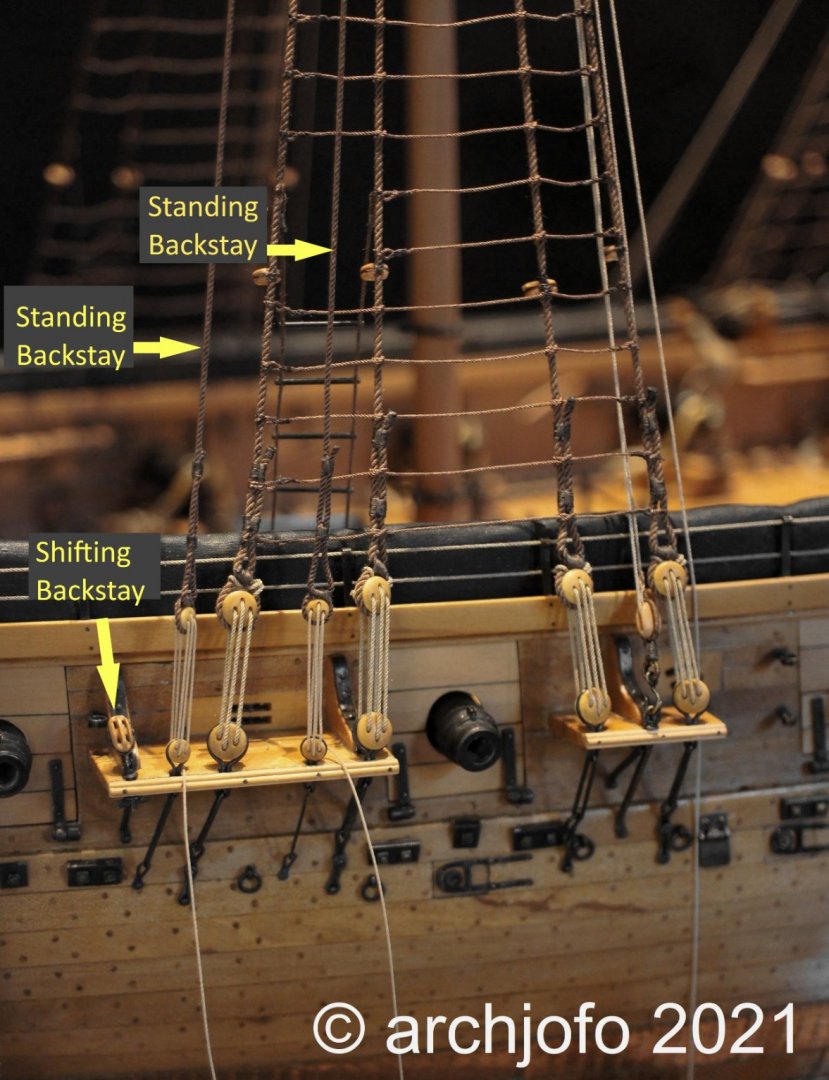
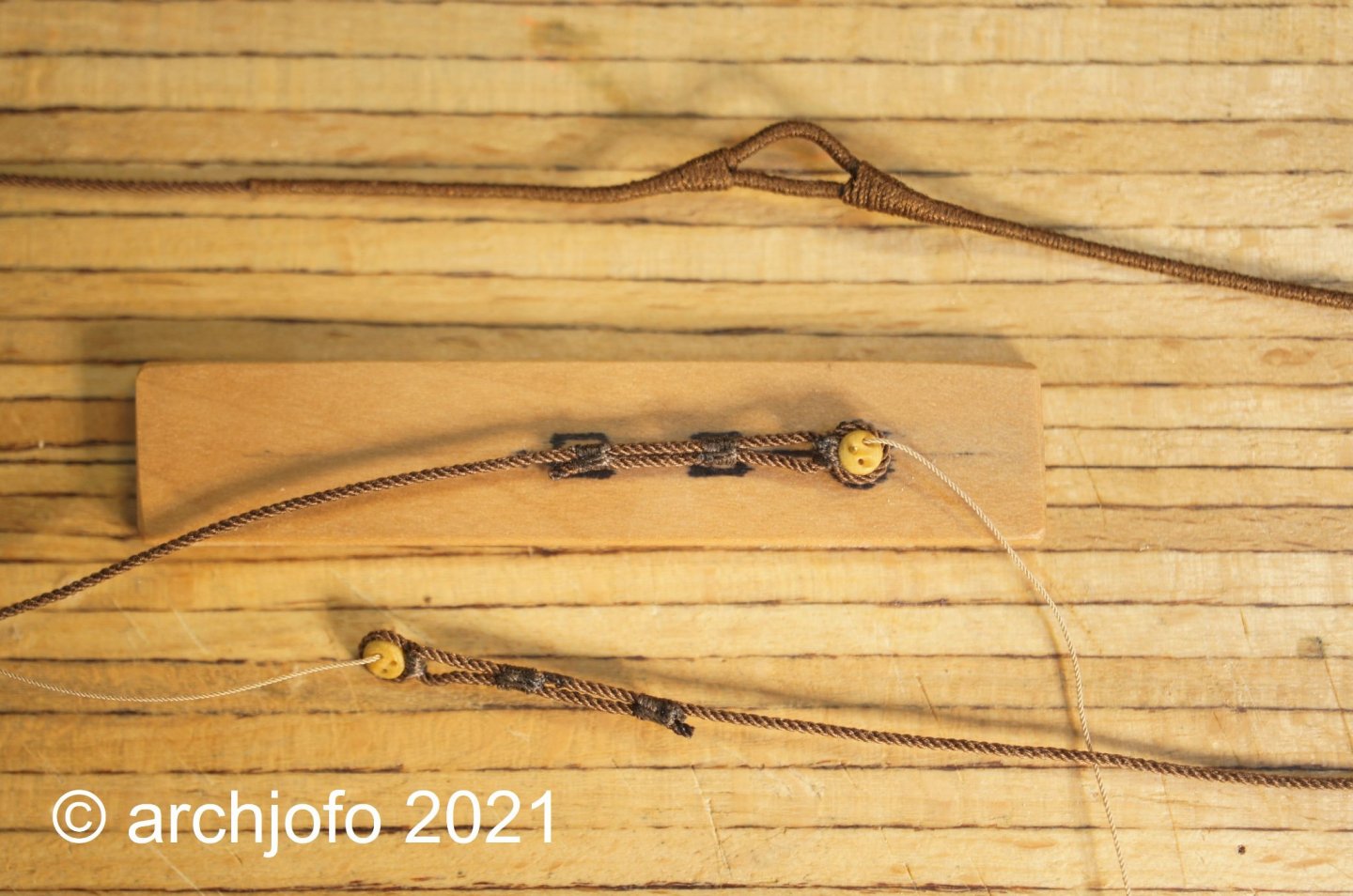
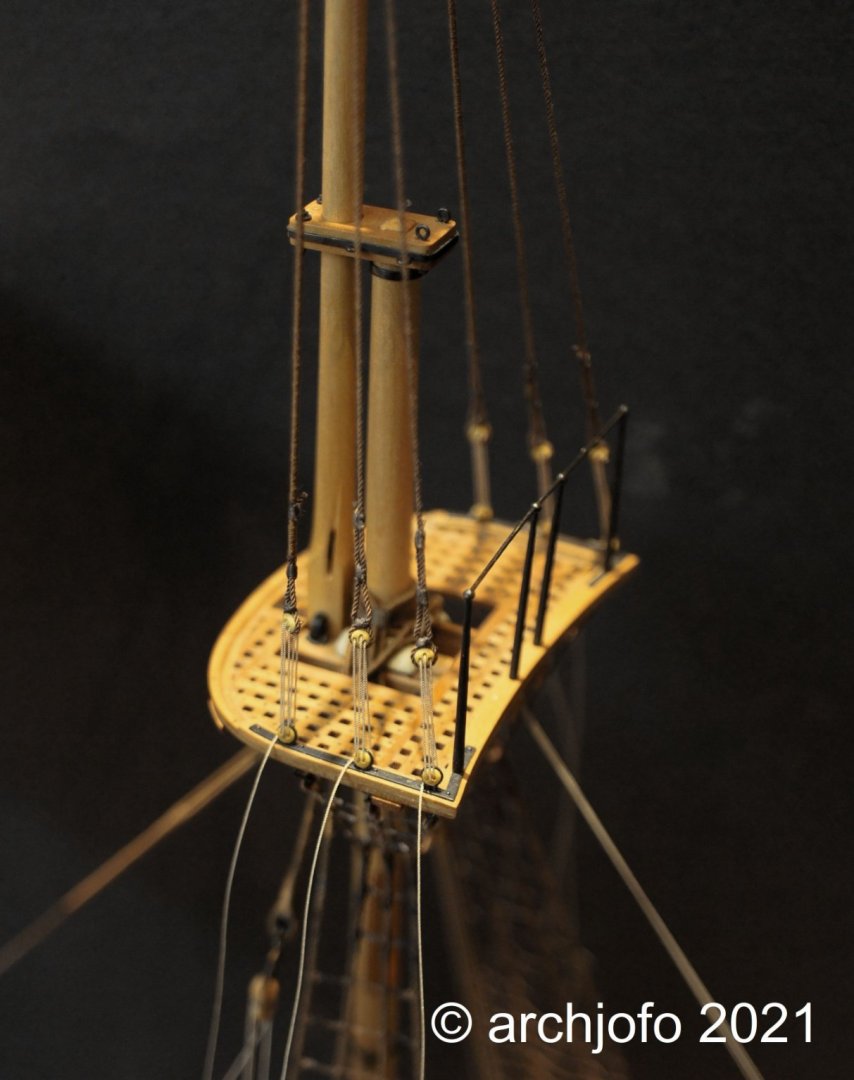
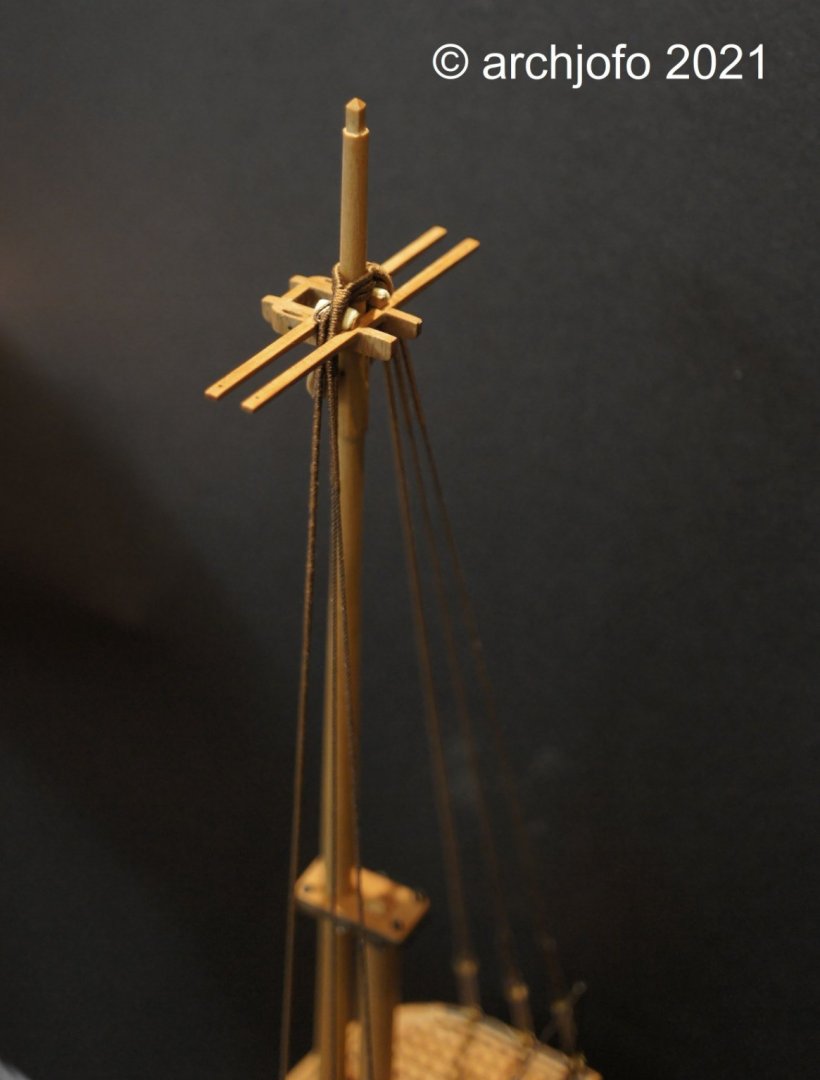
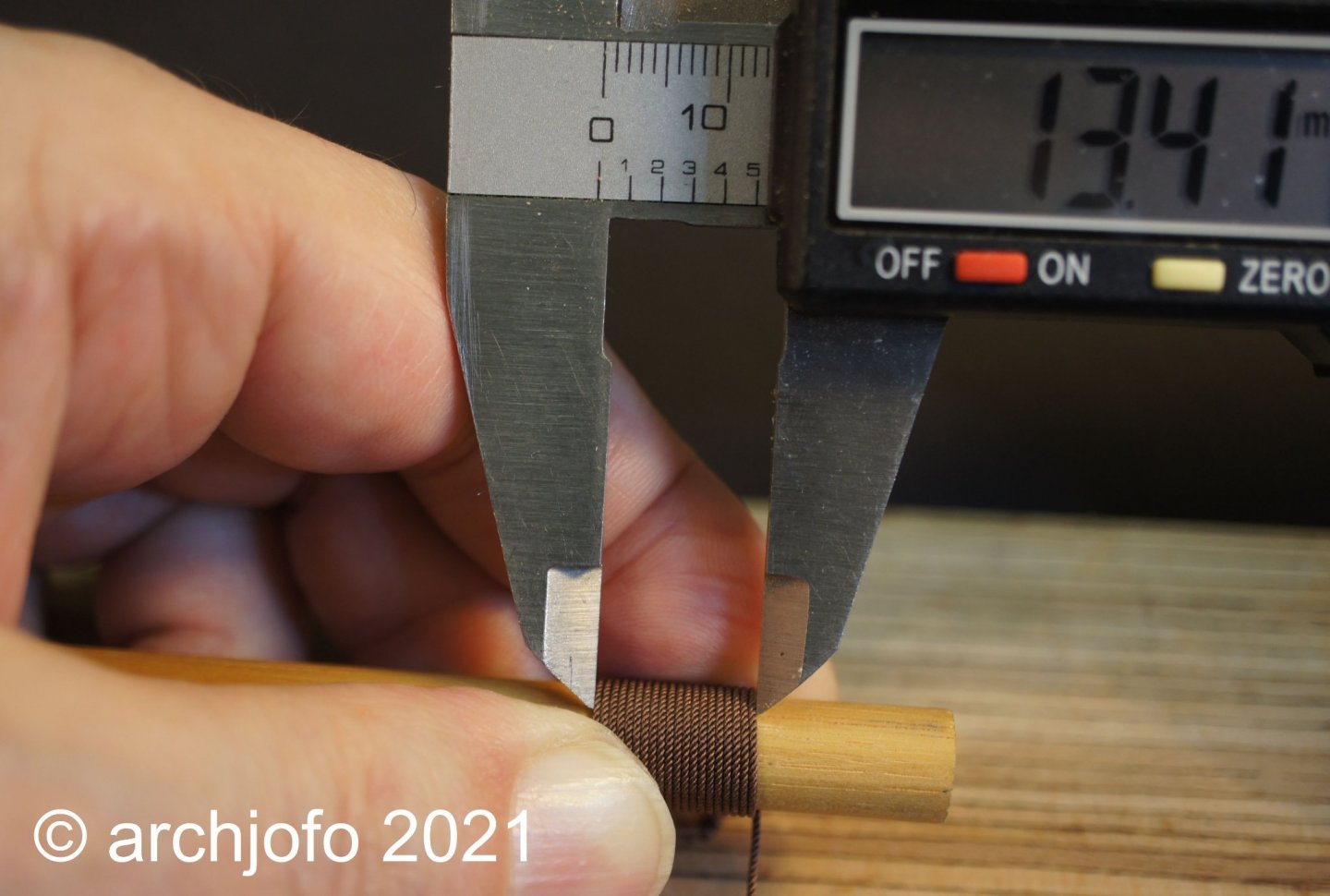
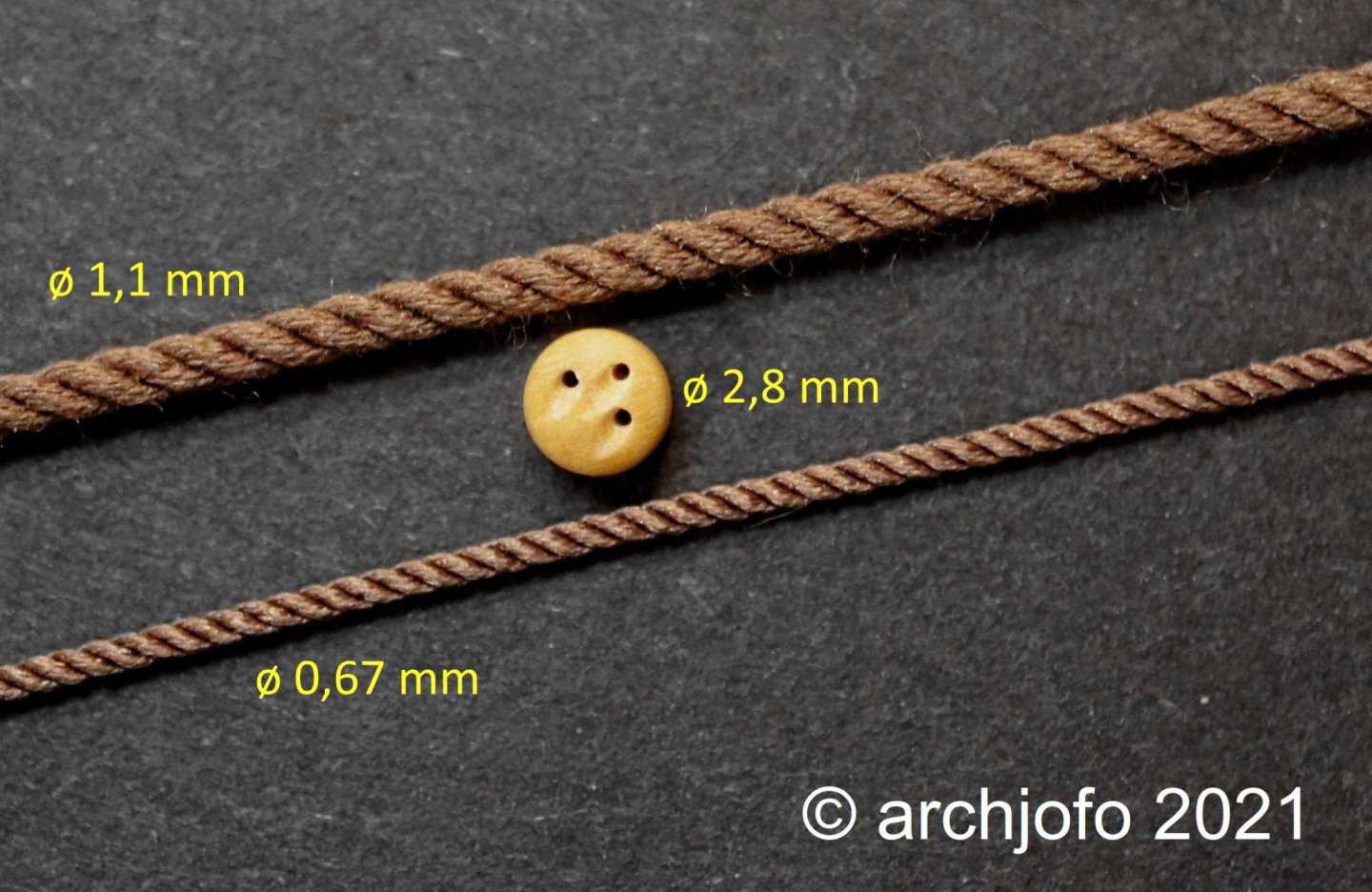
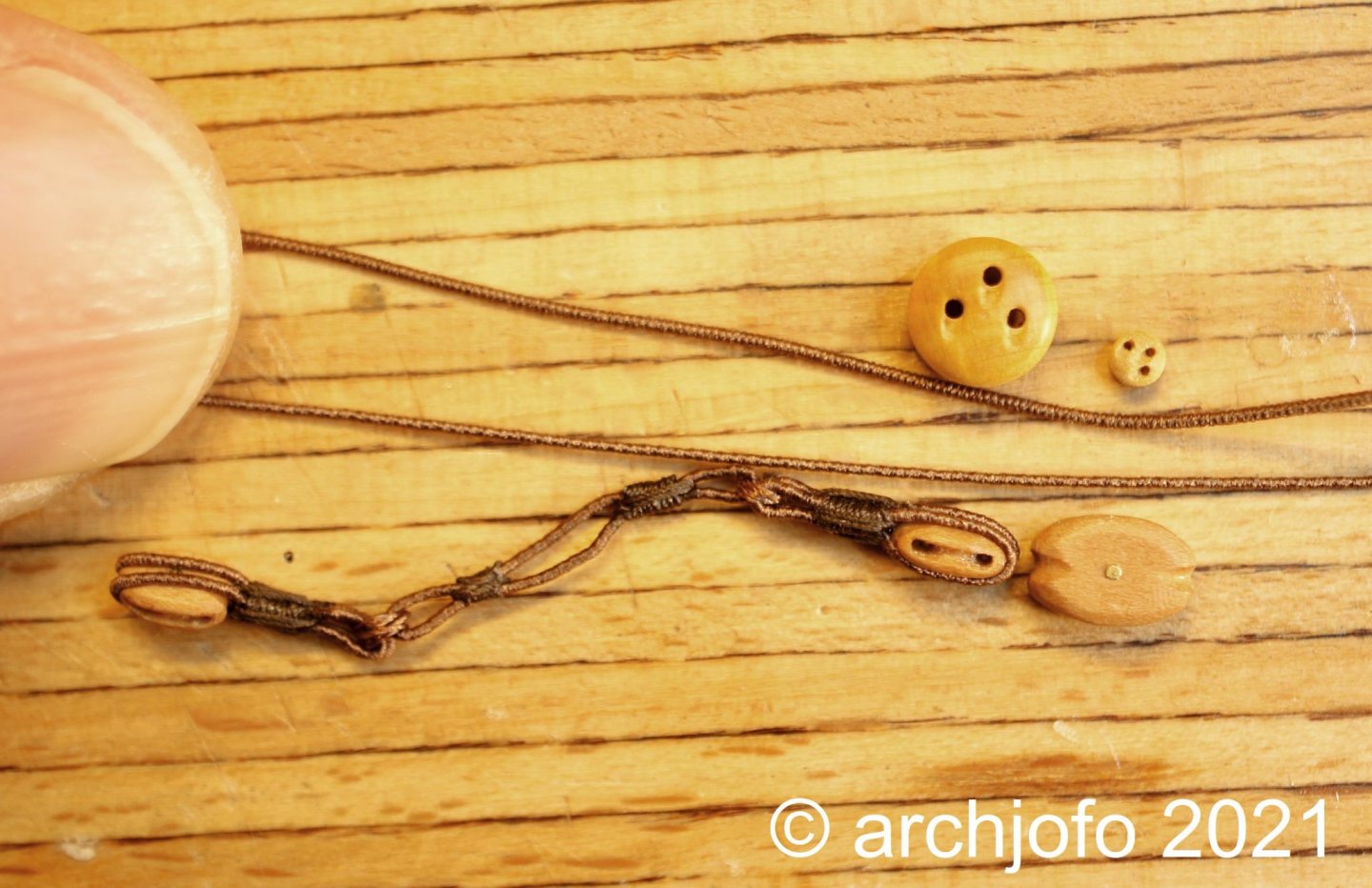
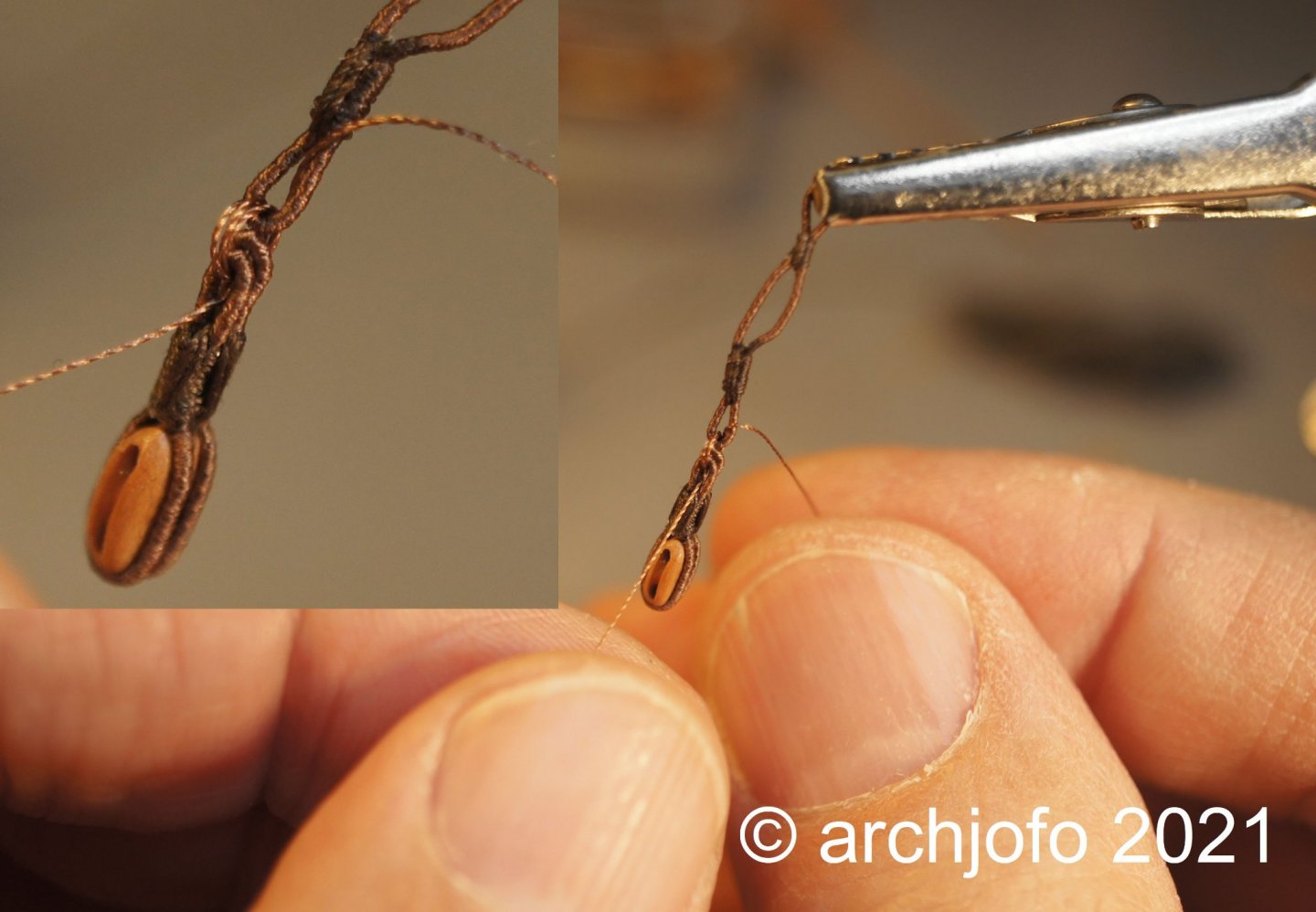
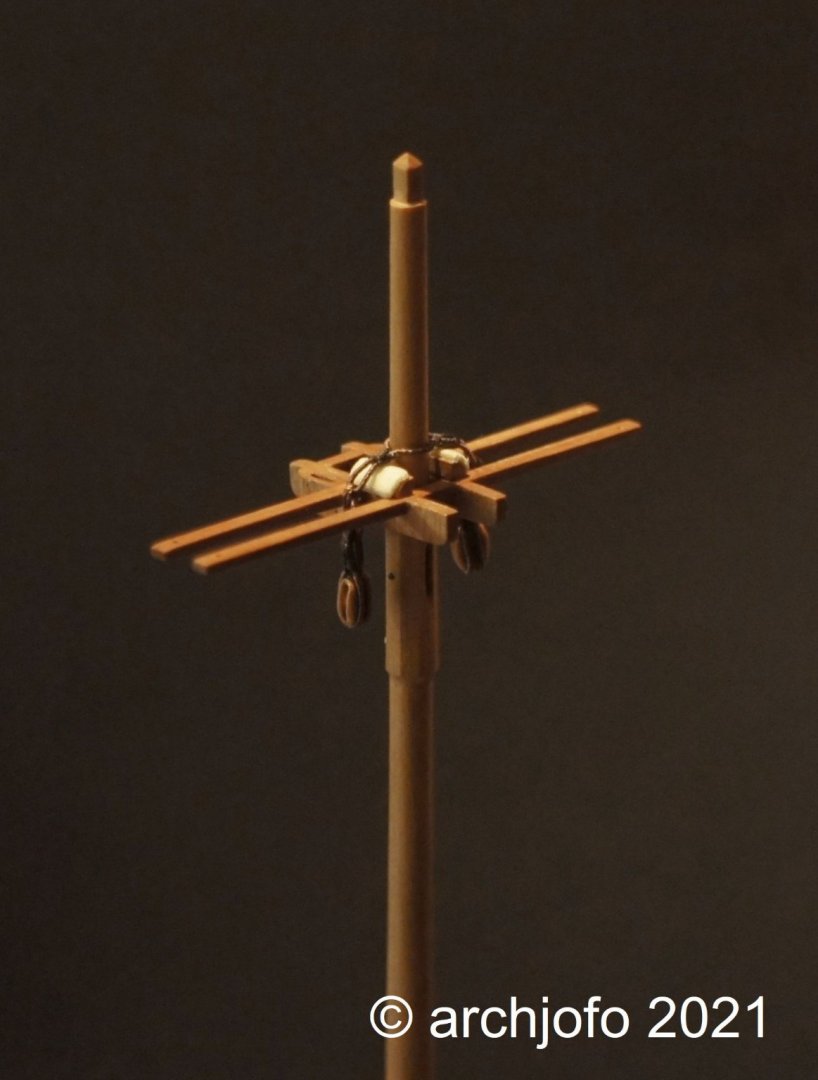
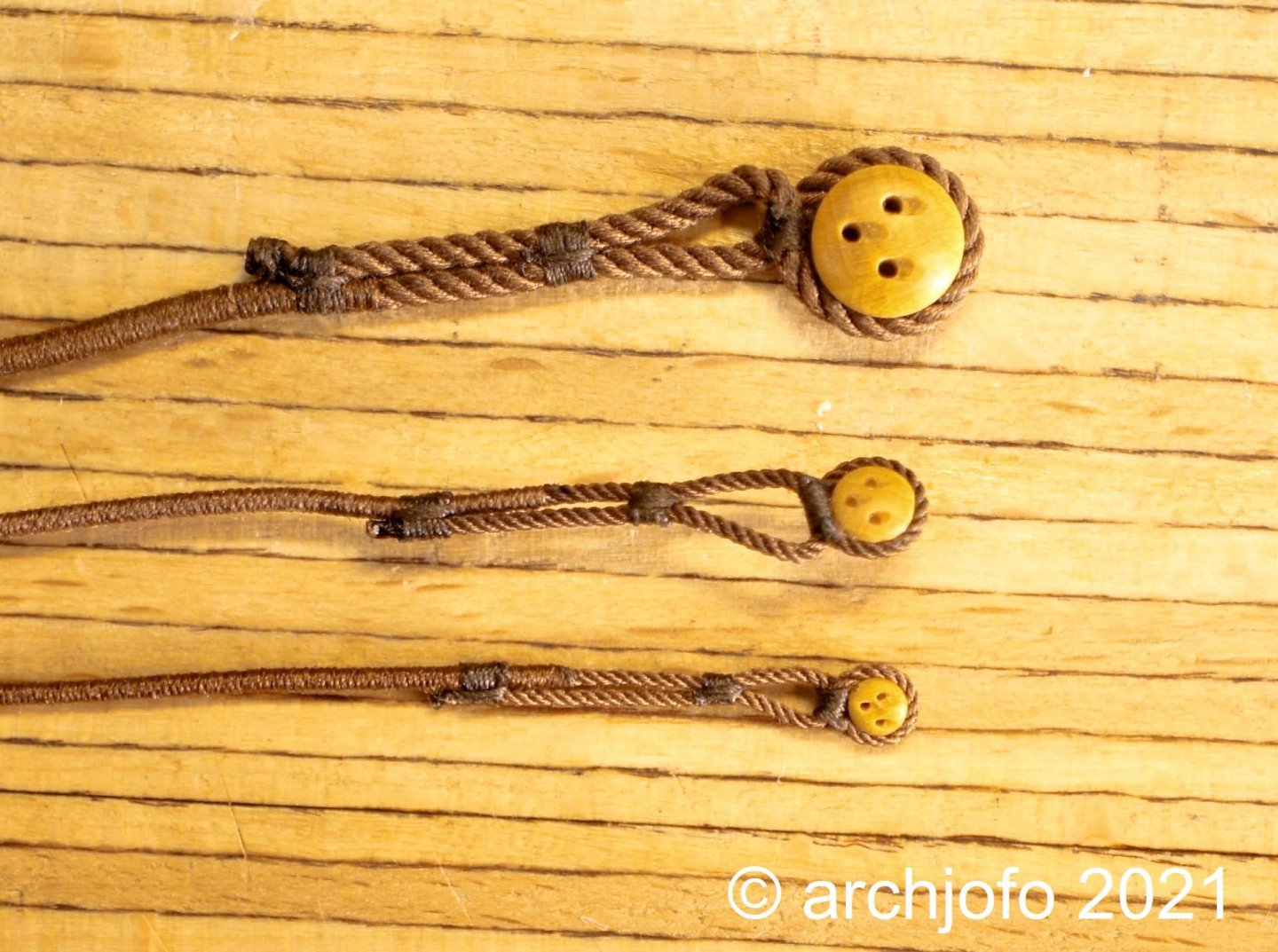
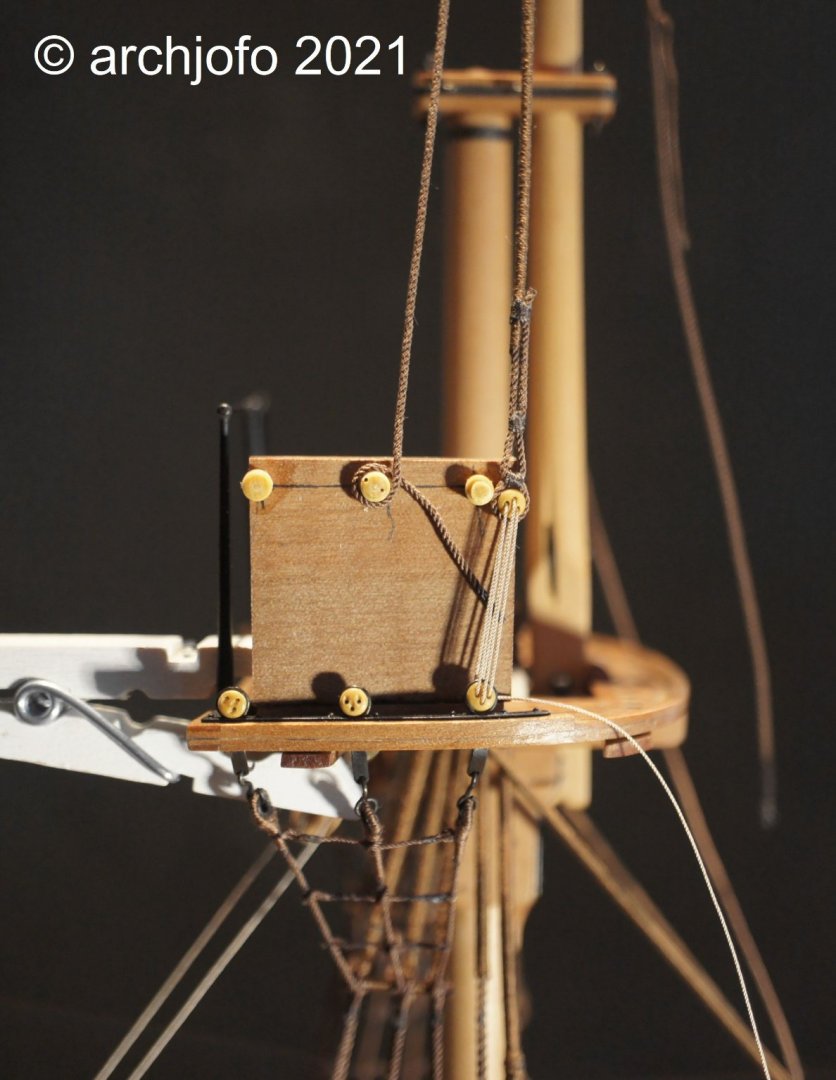
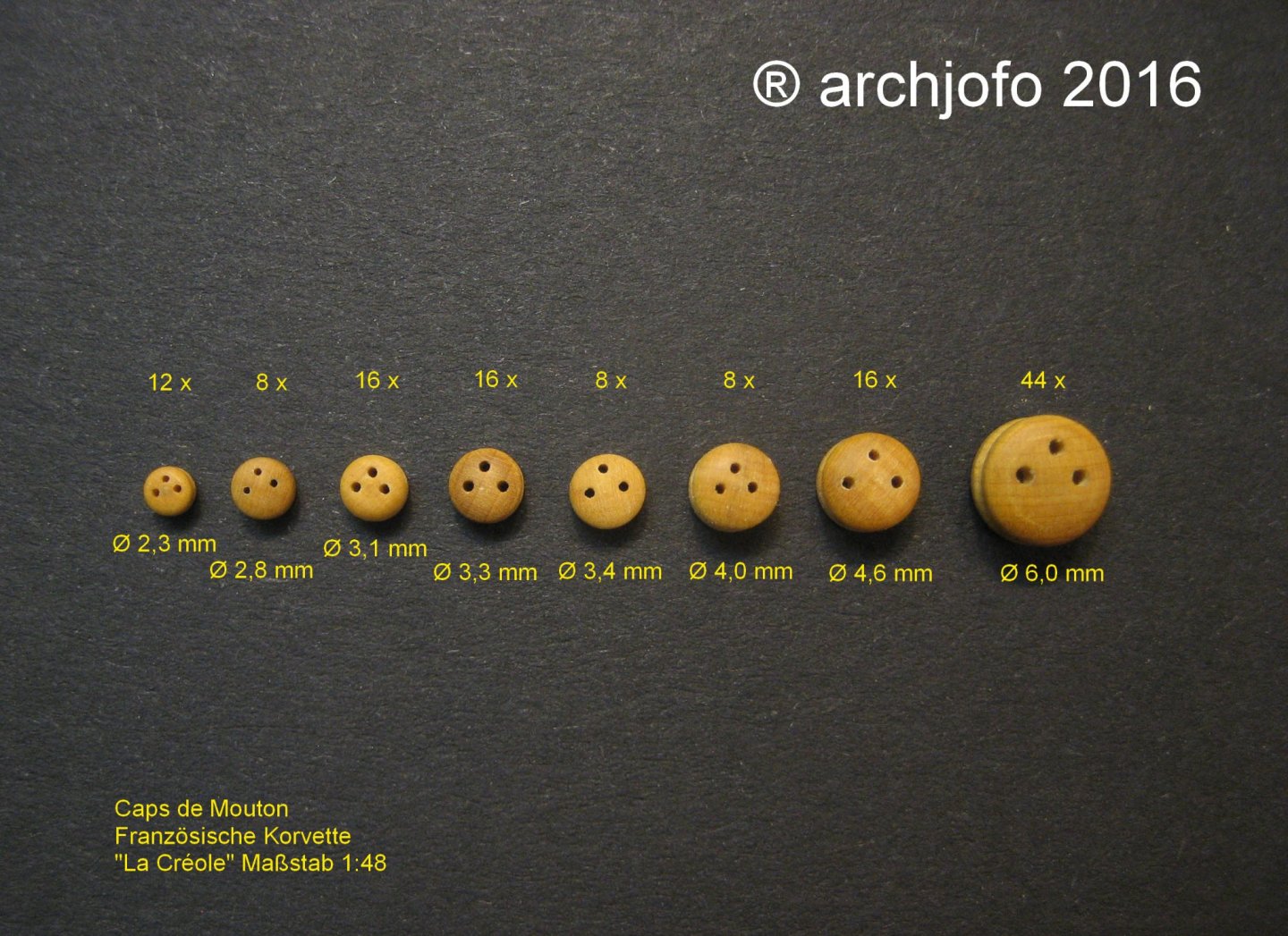
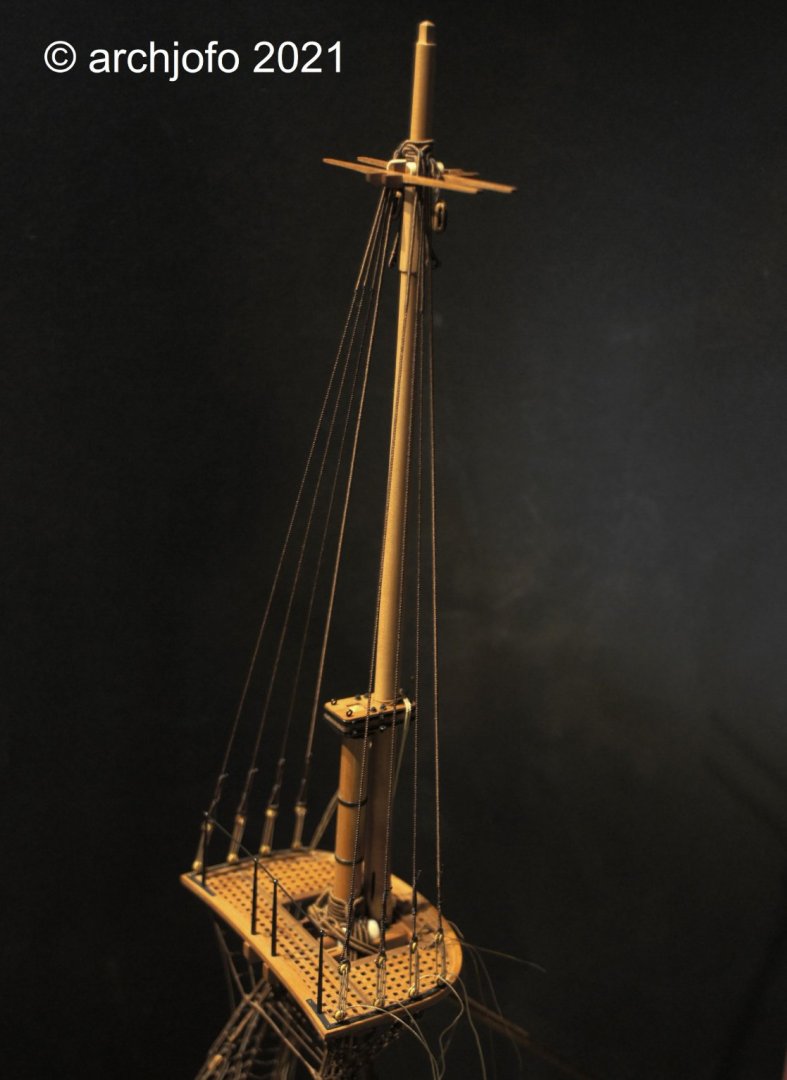
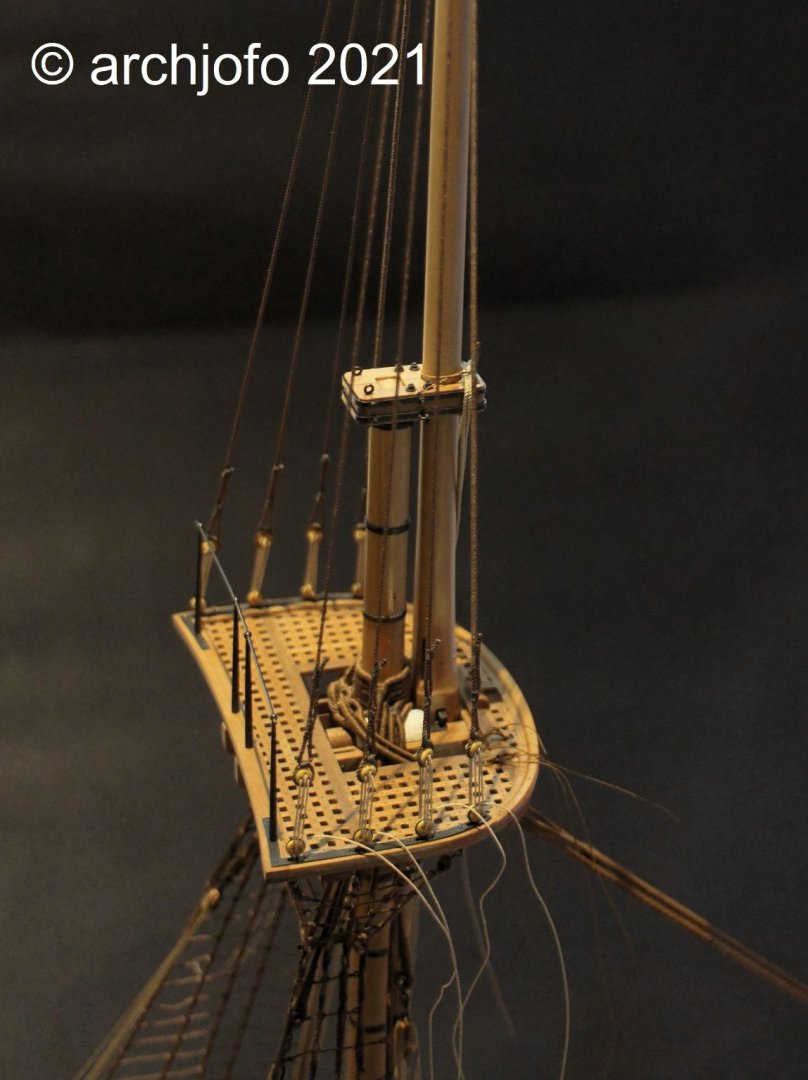
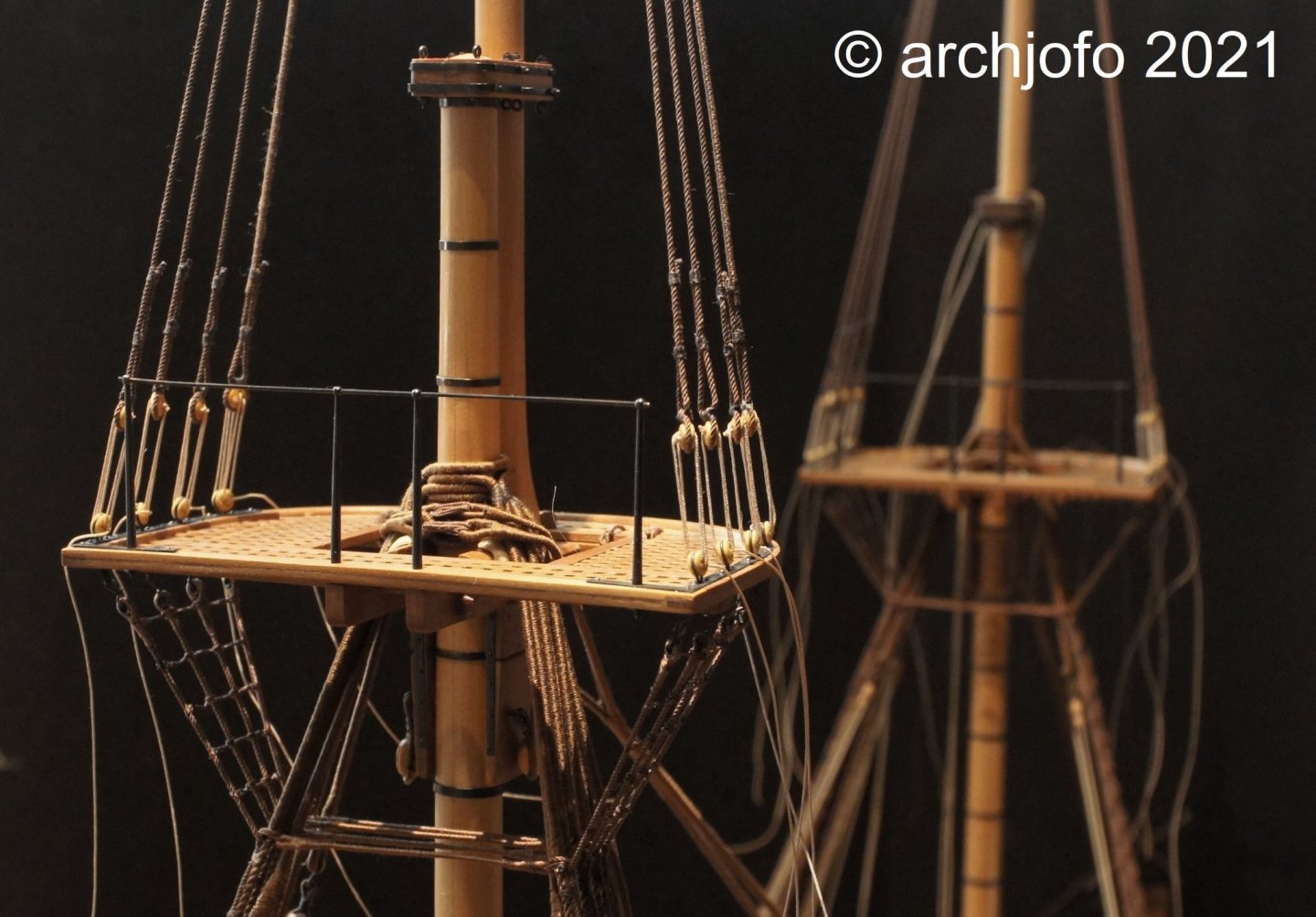
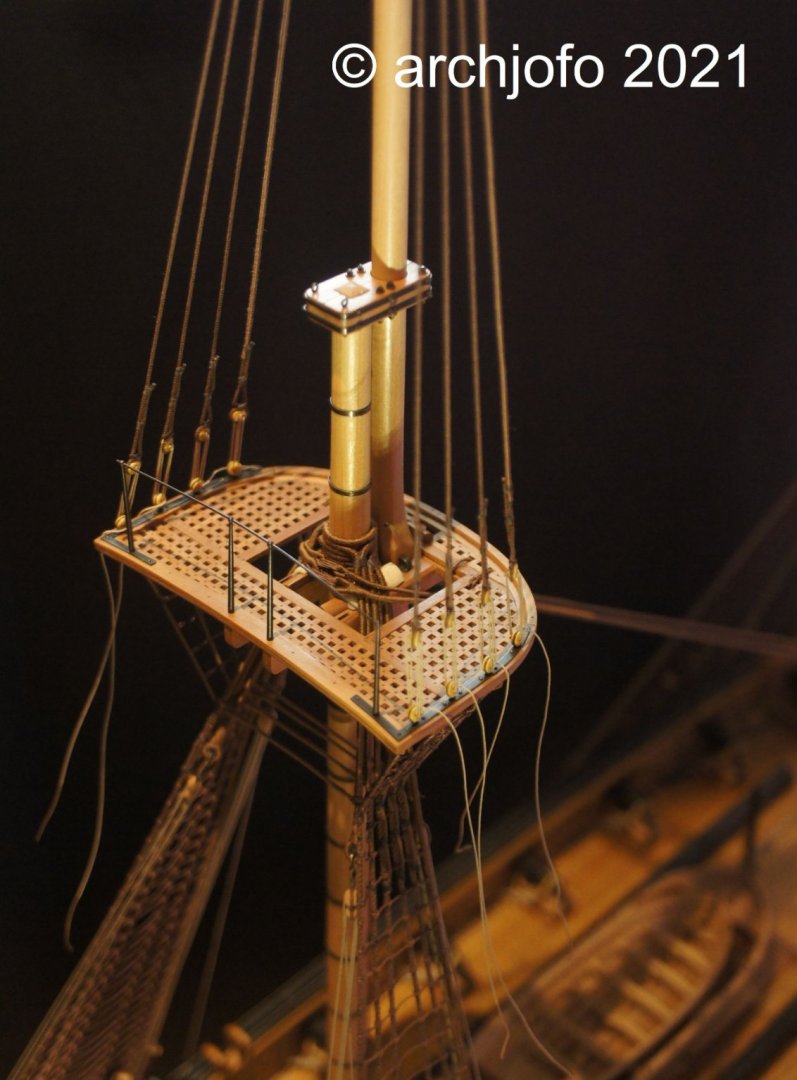
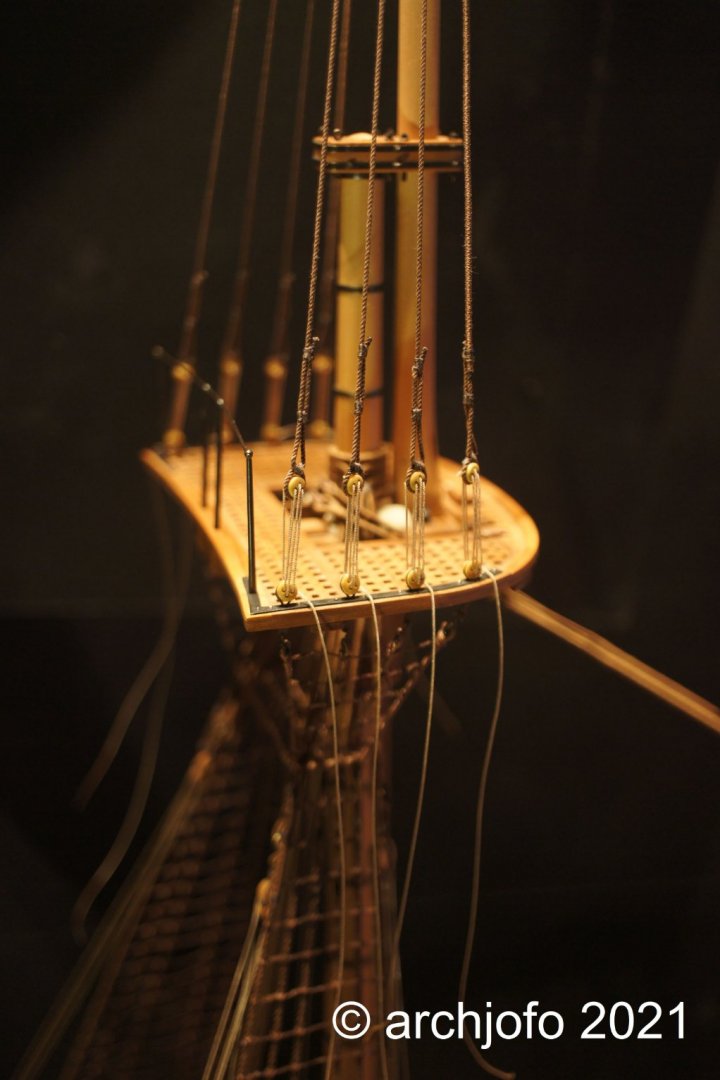
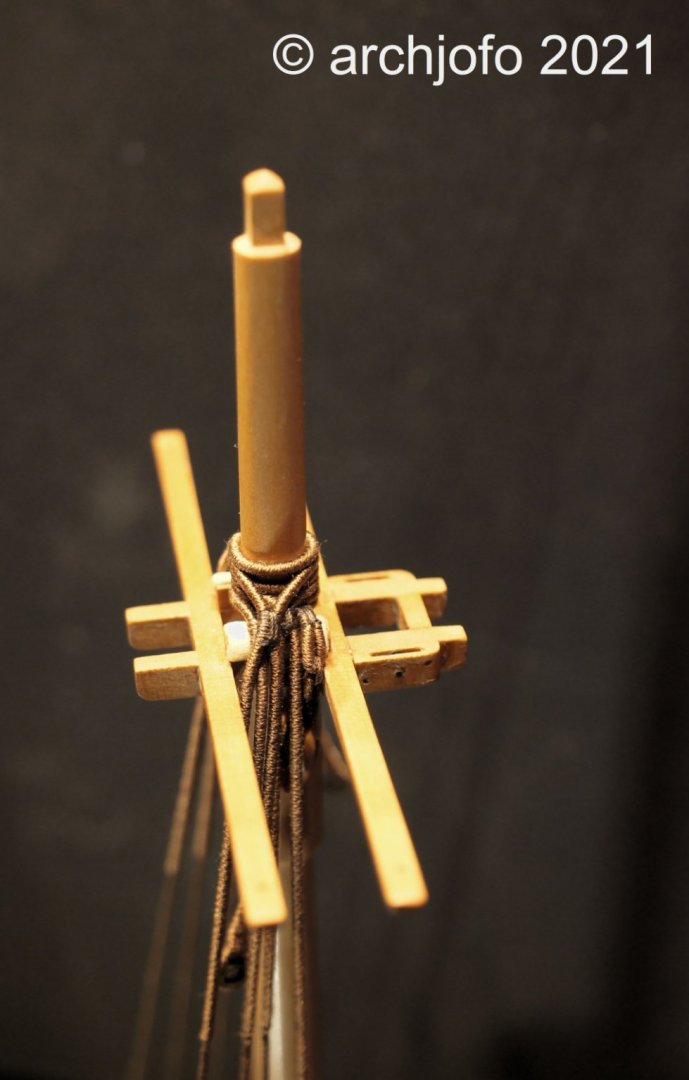
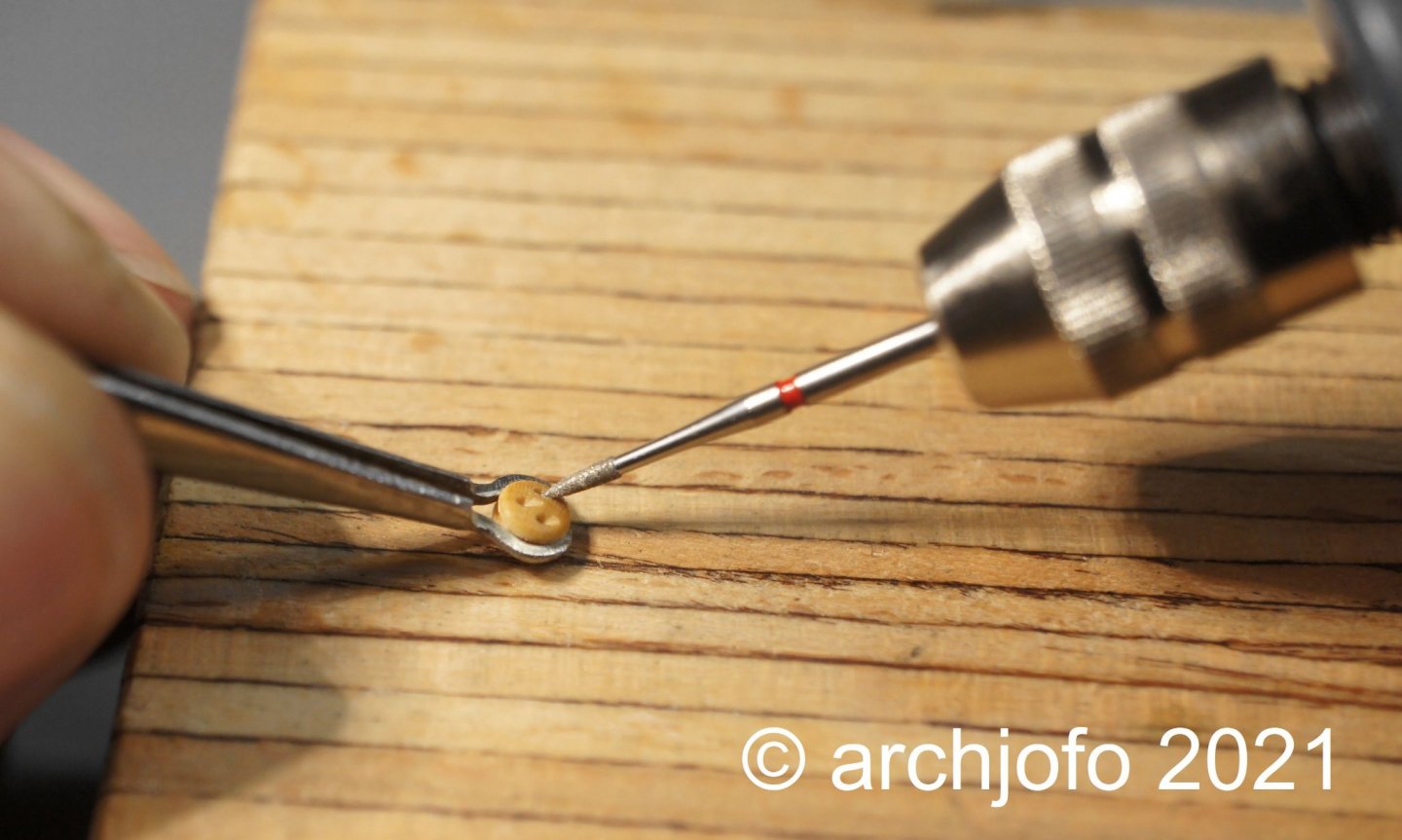

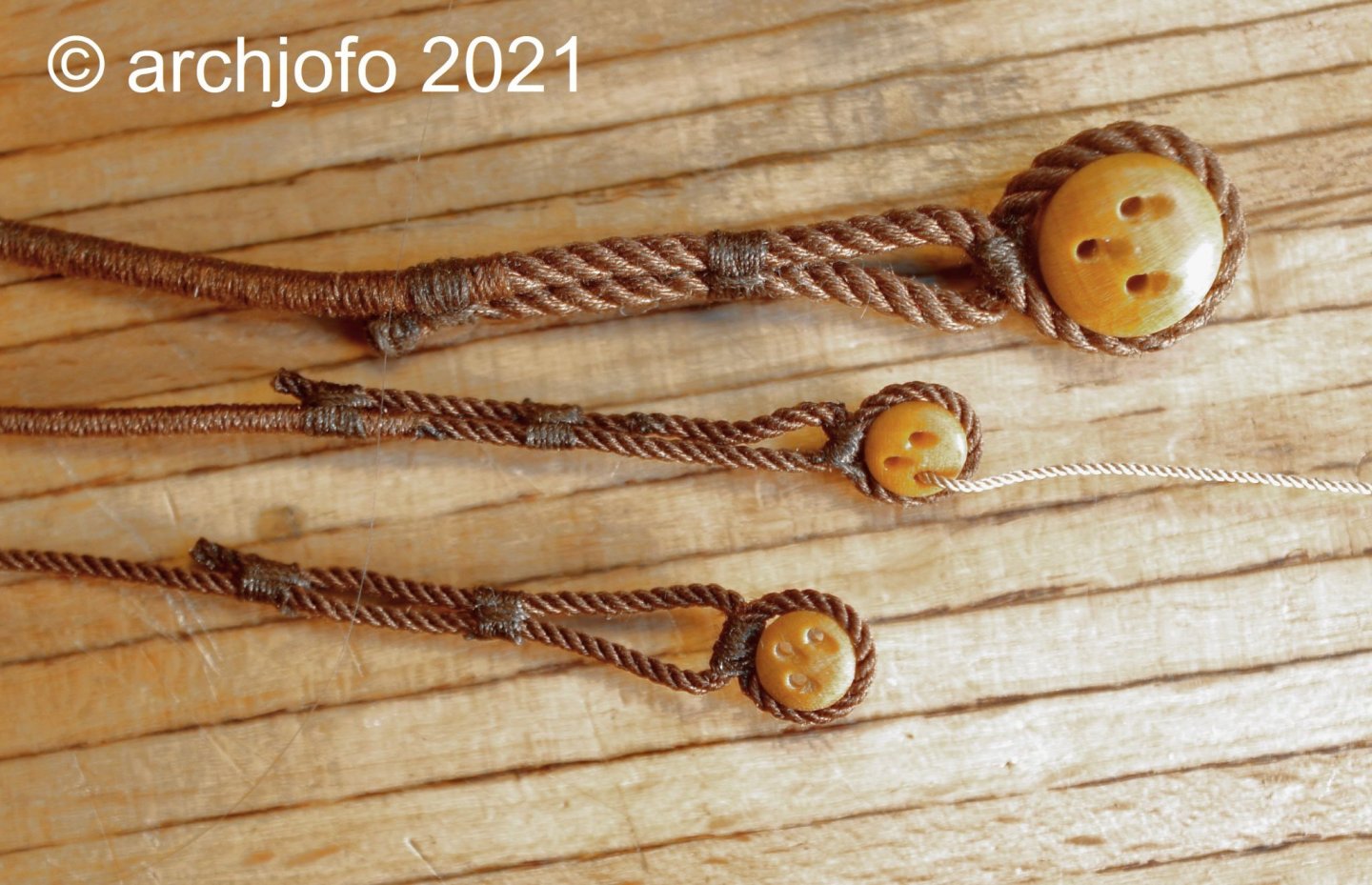
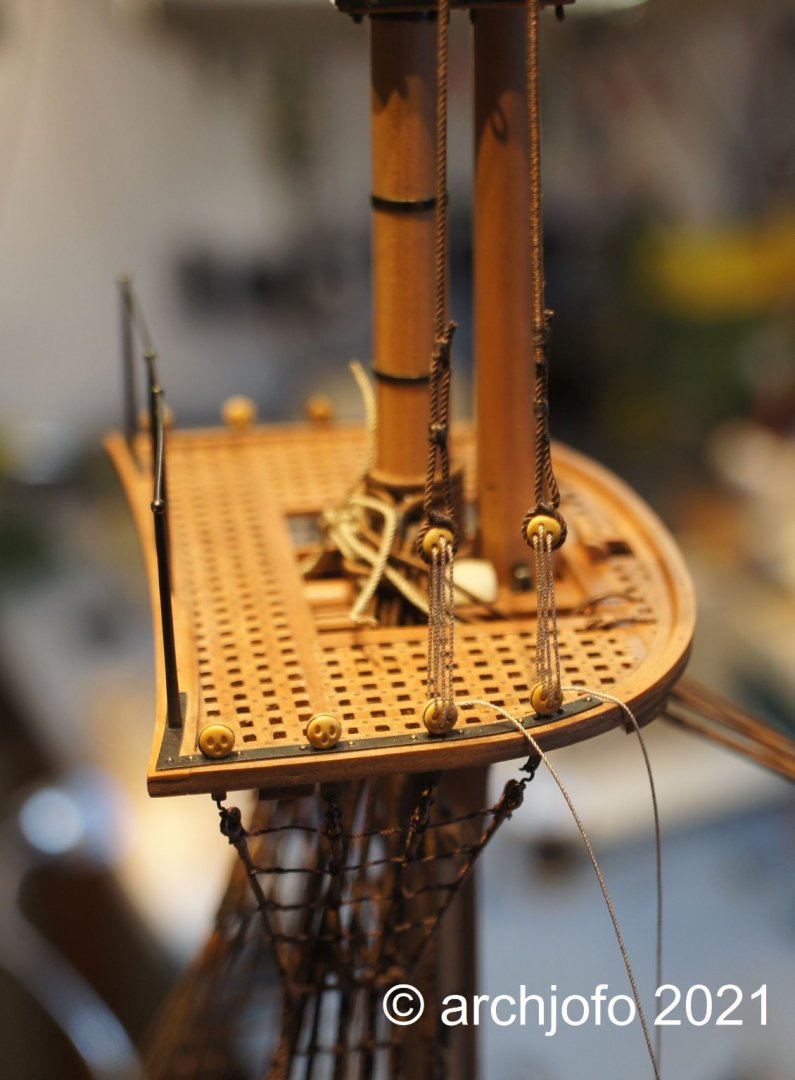
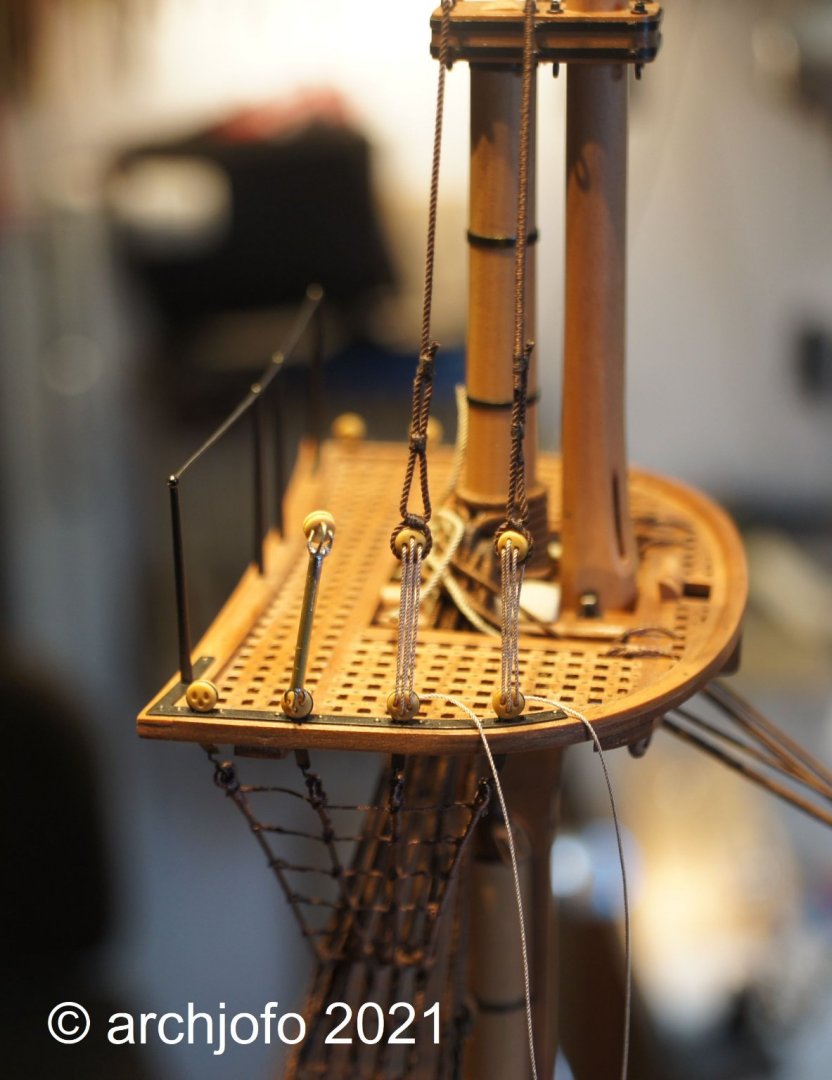
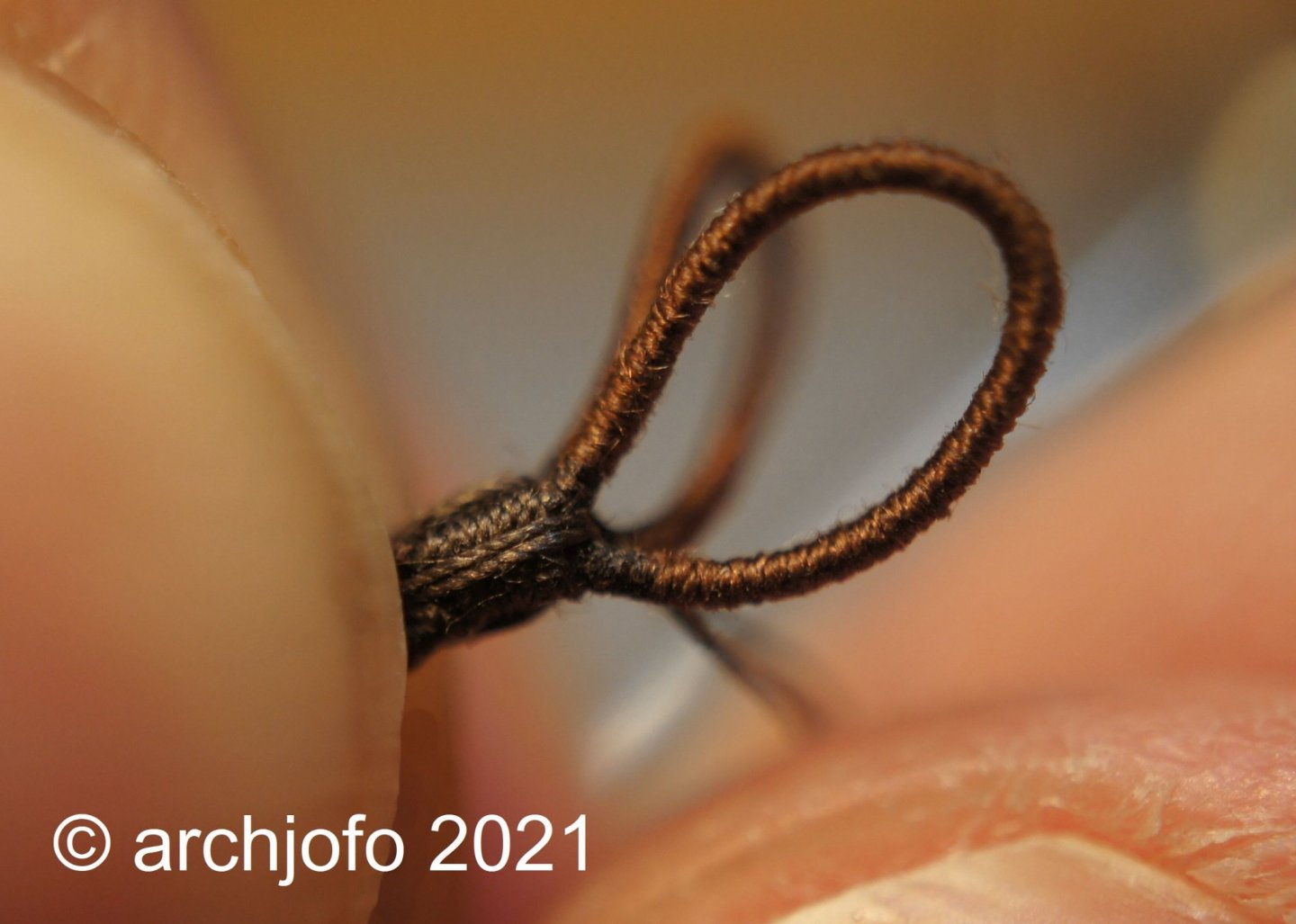
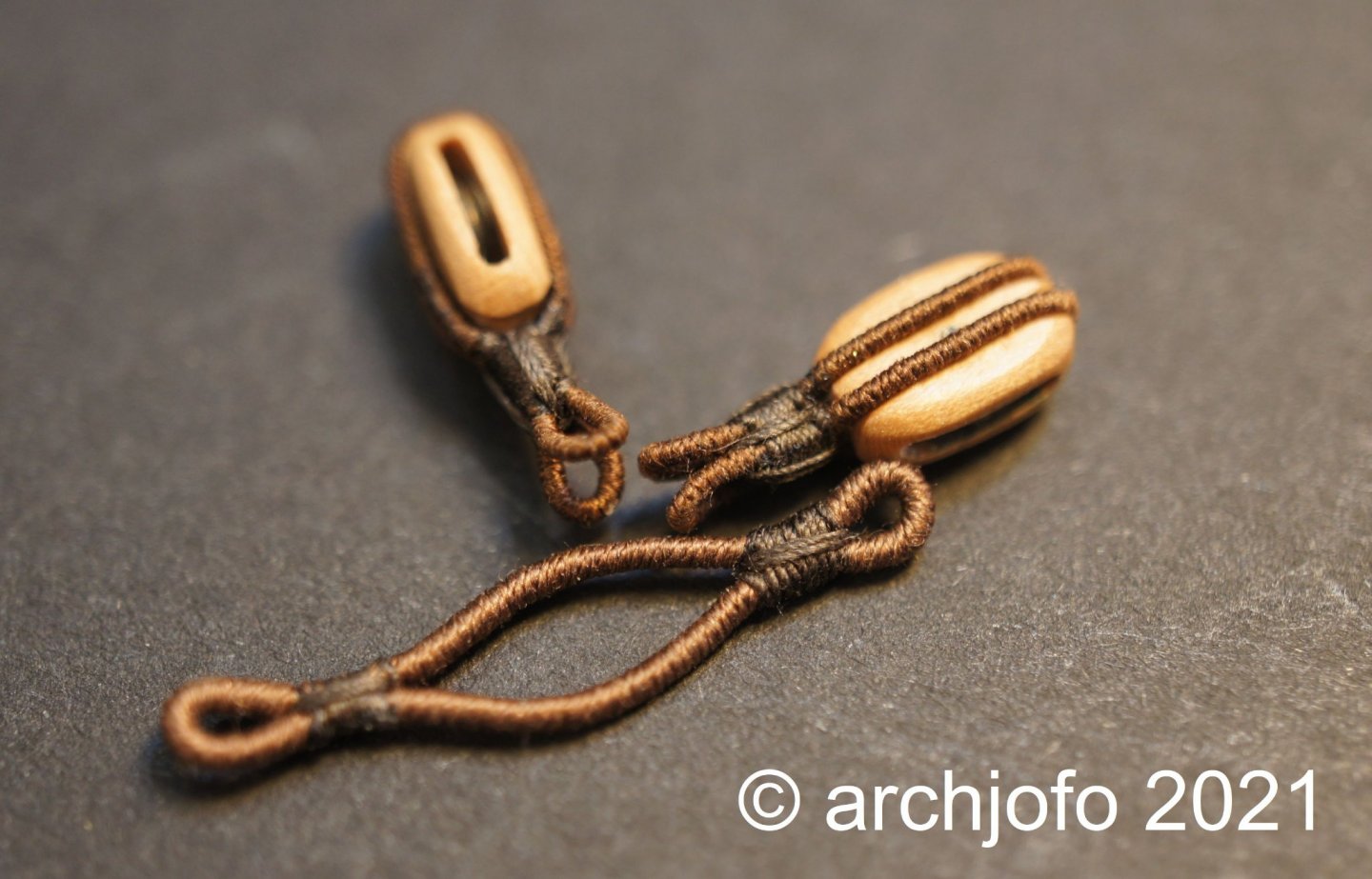
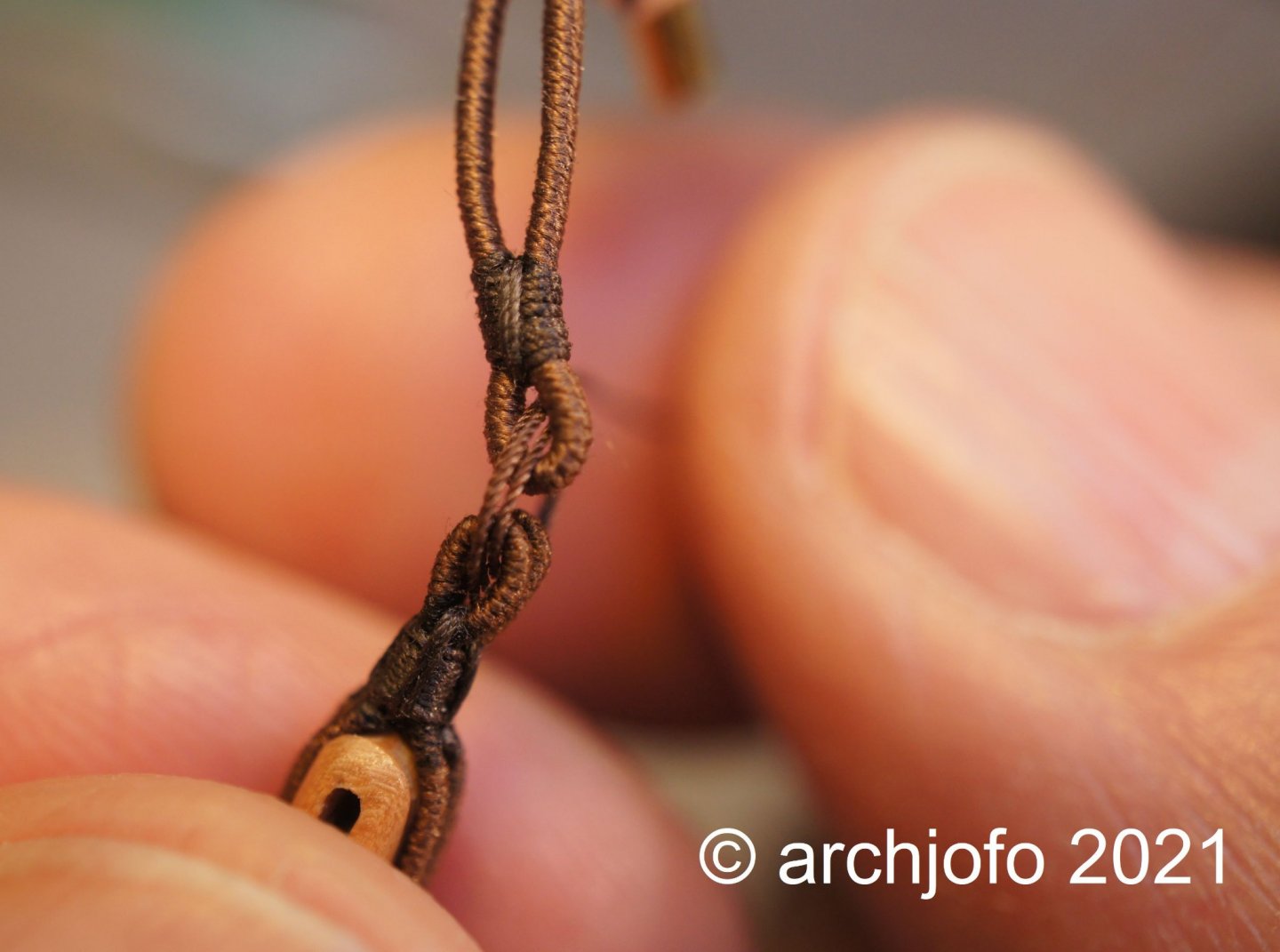
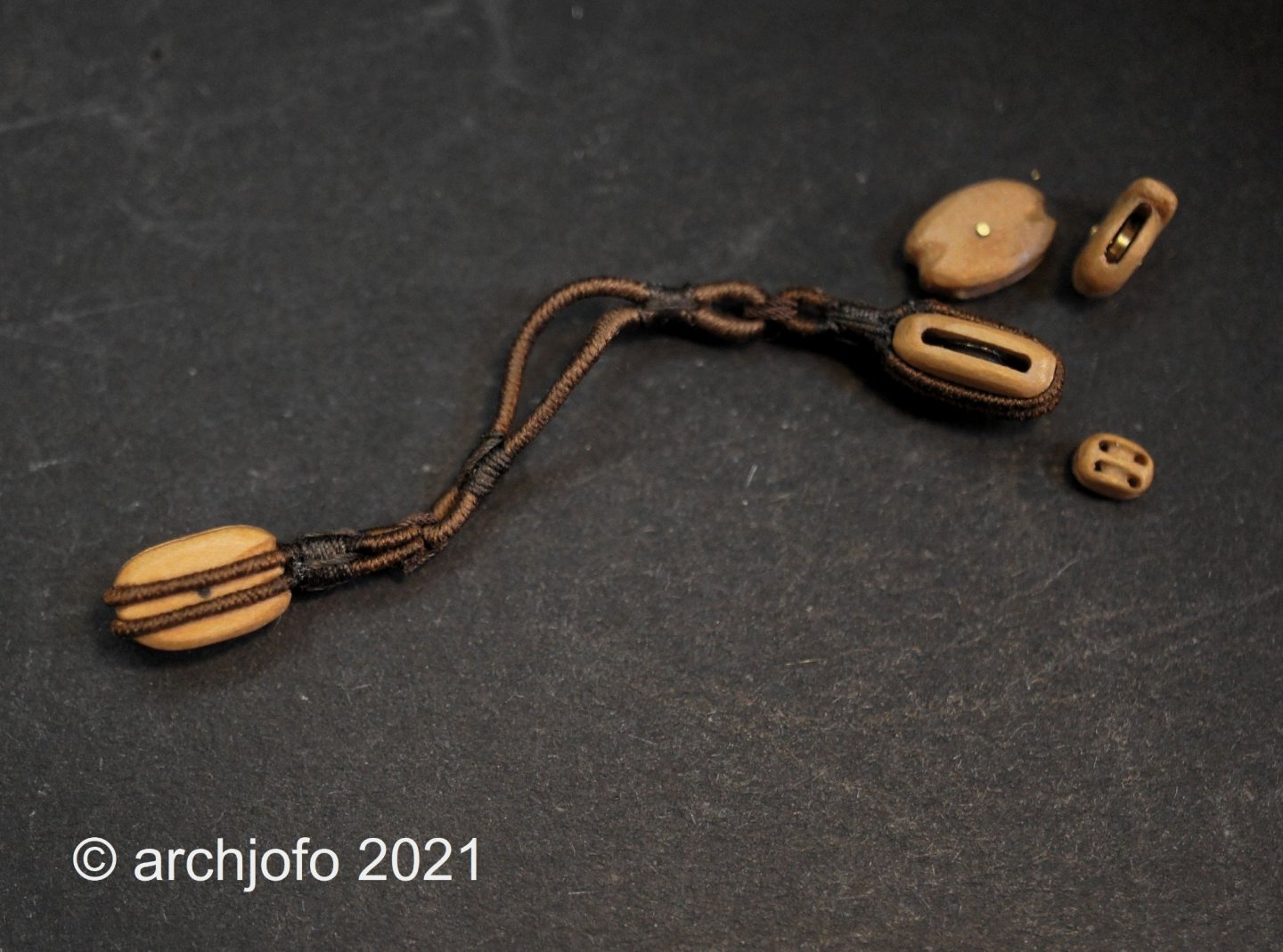
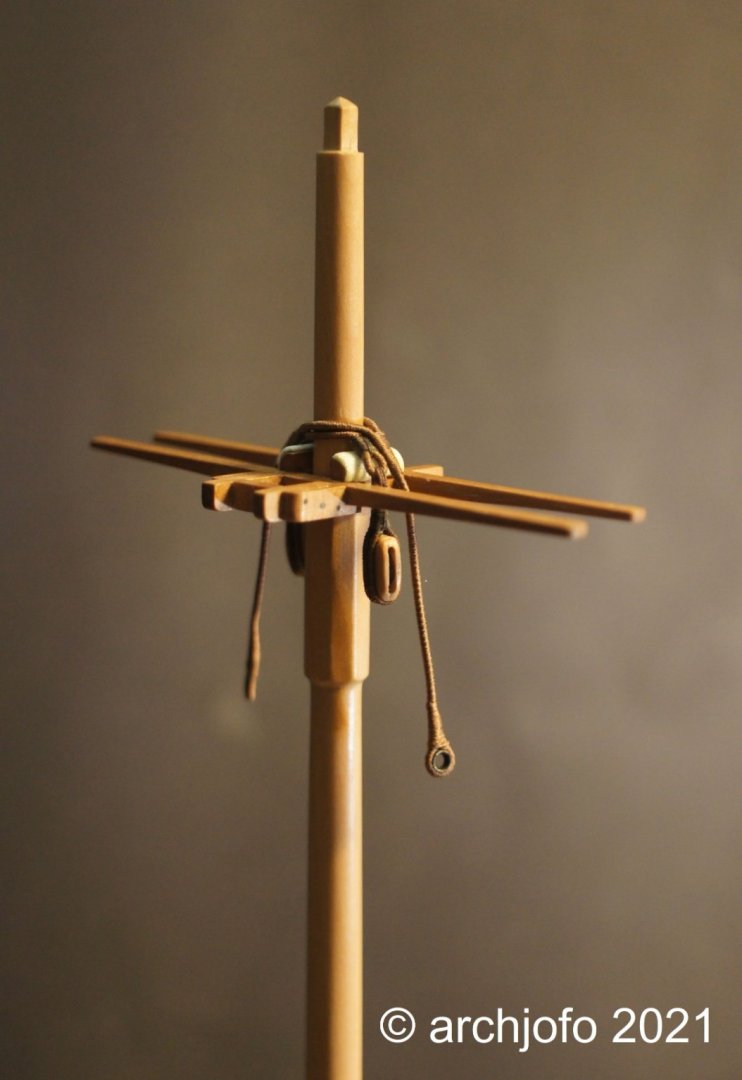
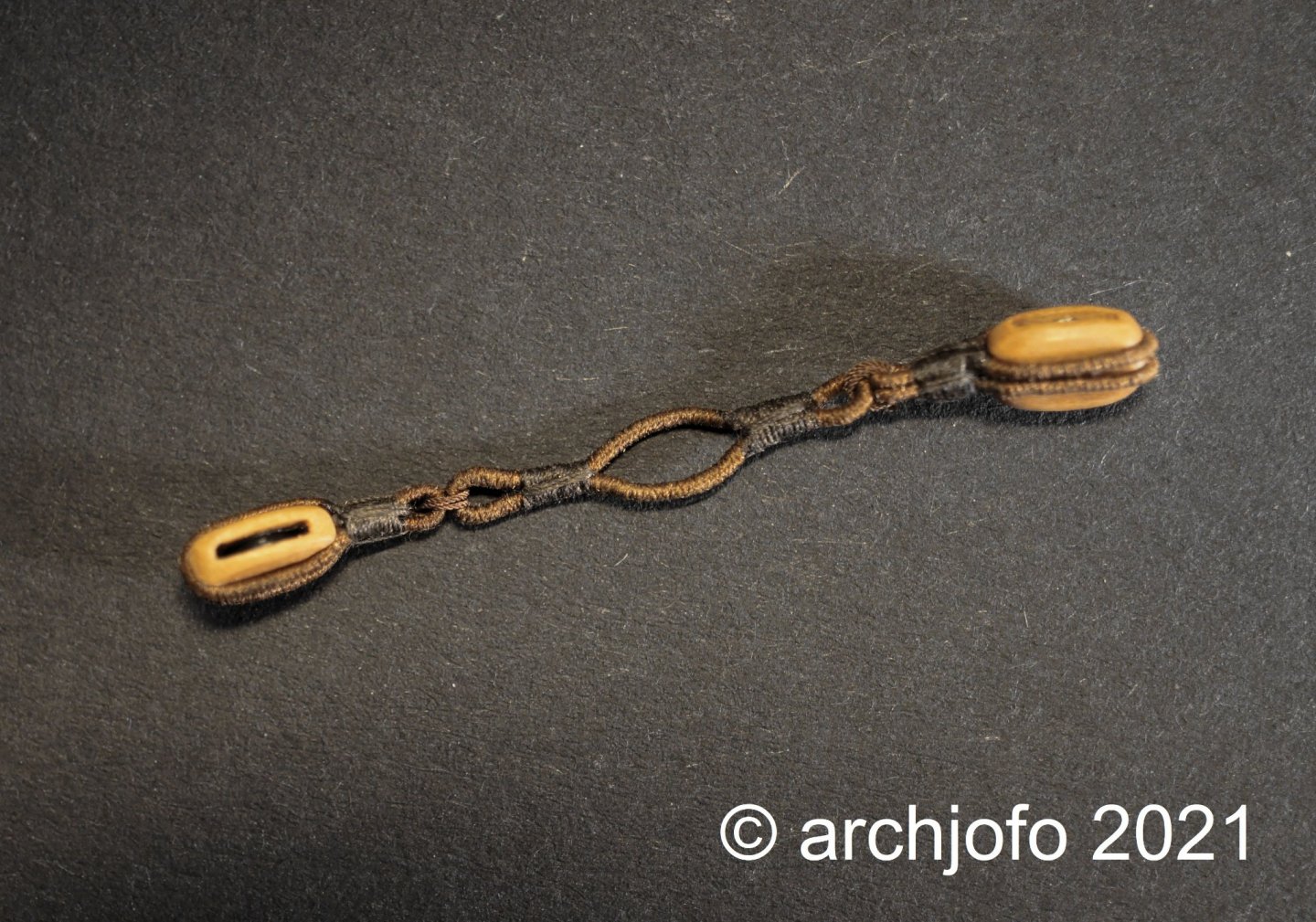
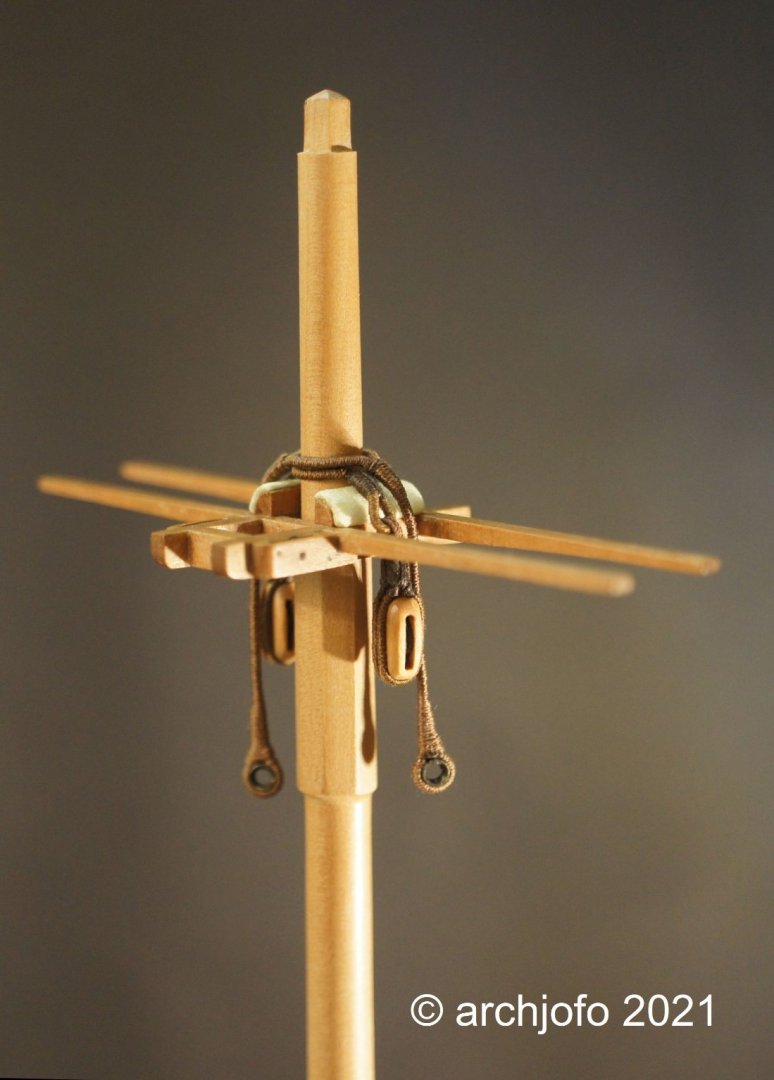
La Créole 1827 by archjofo - Scale 1/48 - French corvette
in - Build logs for subjects built 1801 - 1850
Posted · Edited by archjofo
@Jorge Diaz O
@Hubac's Historian
@Gahm
@md1400cs
@Roger Pellett
@albert
Hello,
there still seems to be interest in my construction report. Thank you for your nice comments and also for the many LIKES.
I am very happy about that and it gives me further motivation for the next sections.
I would like to express my sincere thanks for this.
But let's continue here.
I was able to finish the double blocks for the breast backstays in the meantime.
And here is an overview of the back stays of the La Créole:
The Shifting Backstays are already in preparation.
More about that soon.